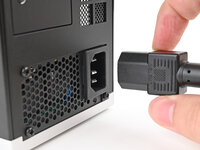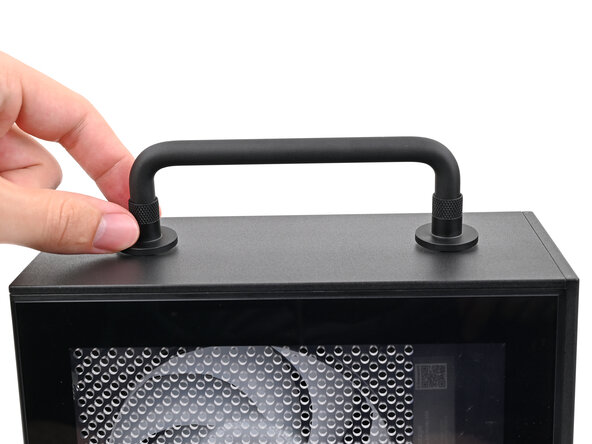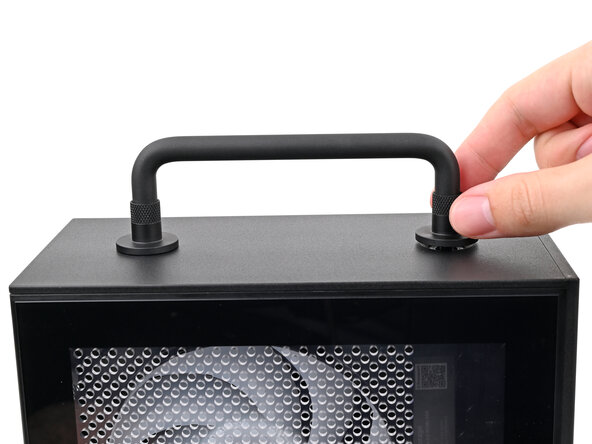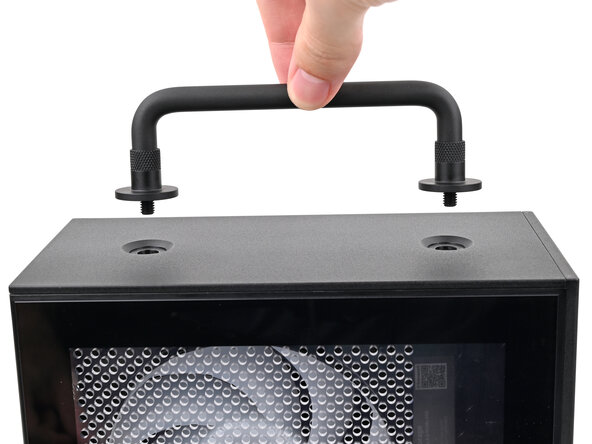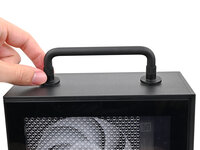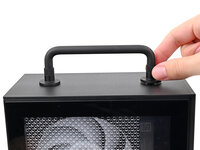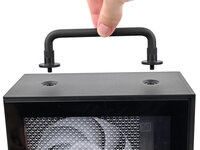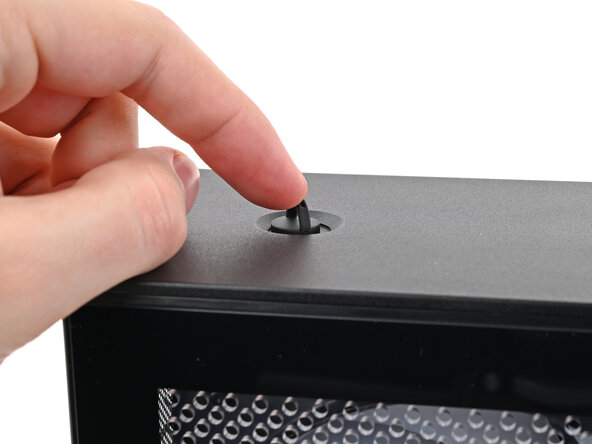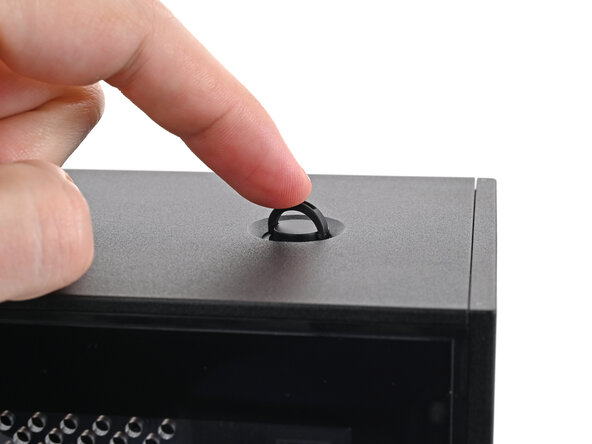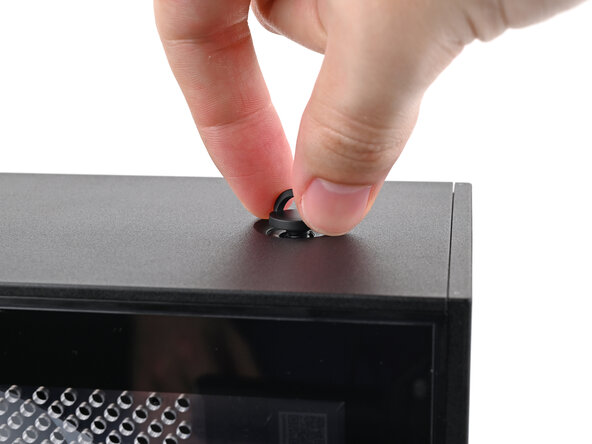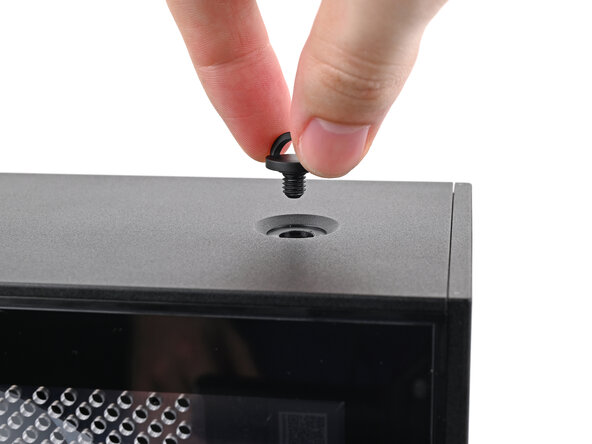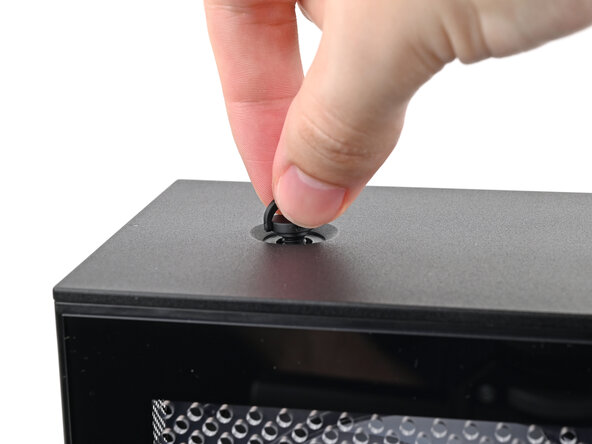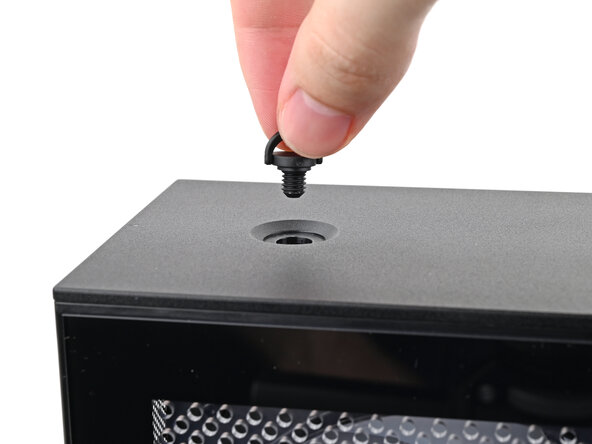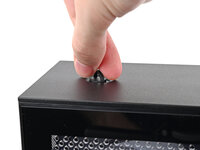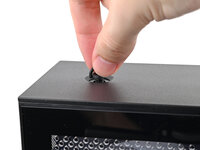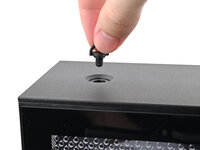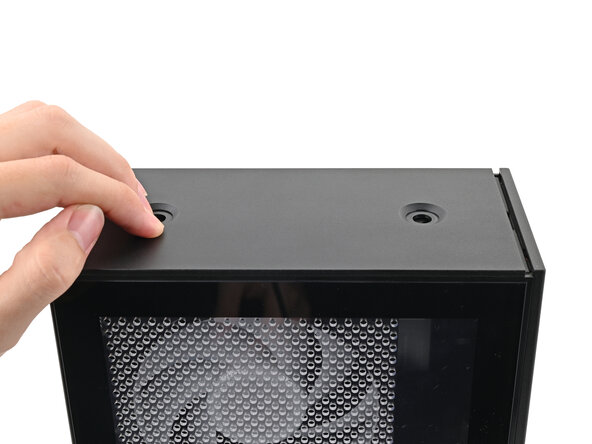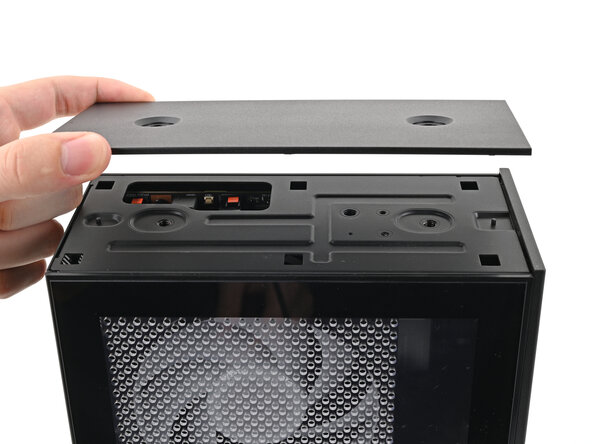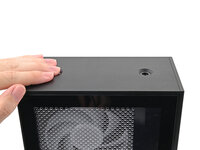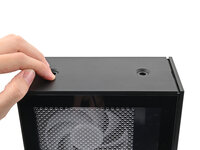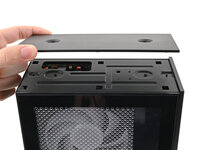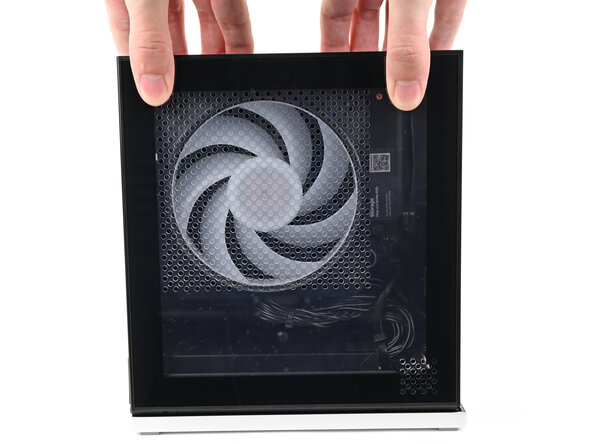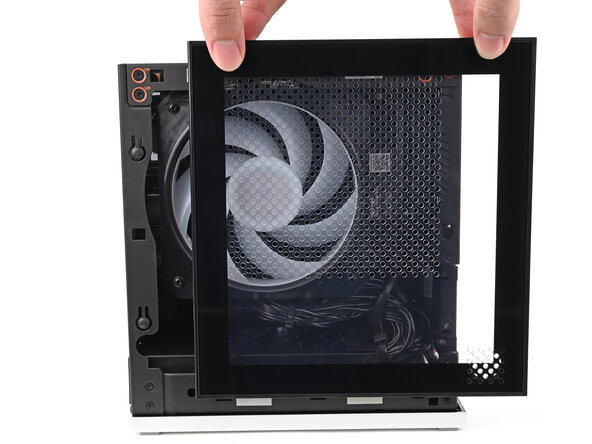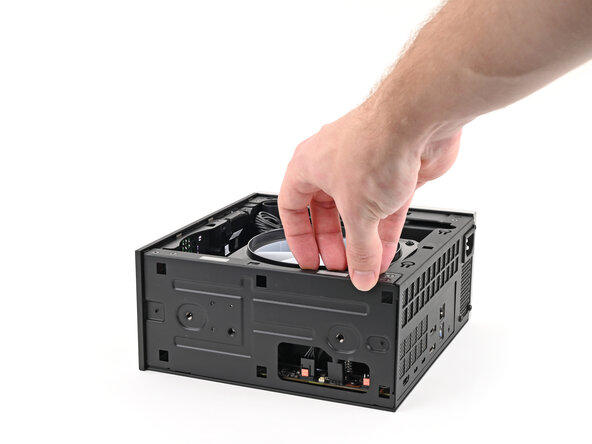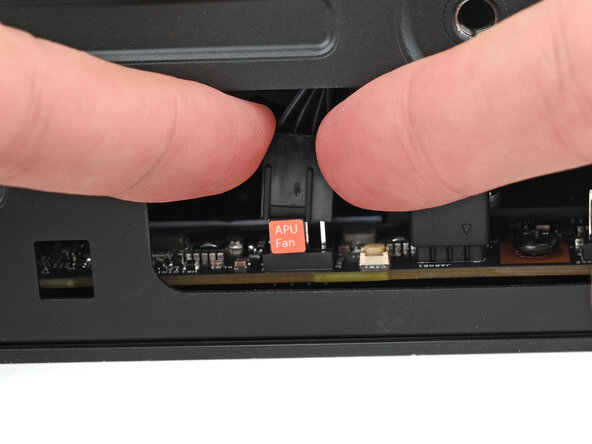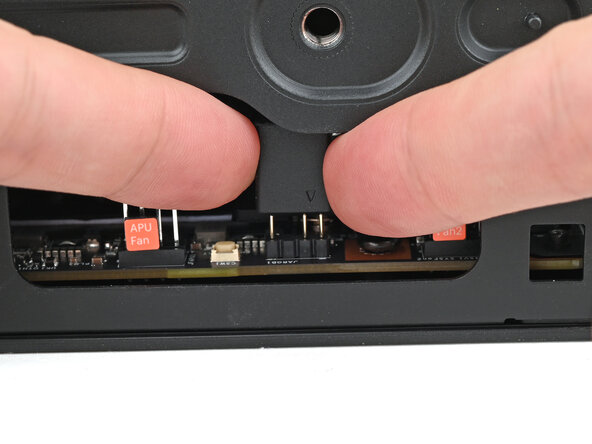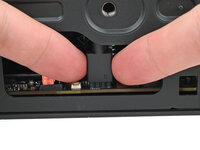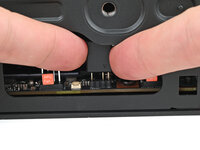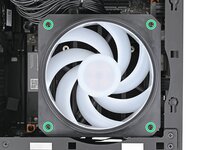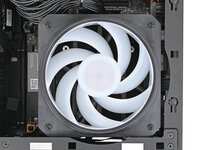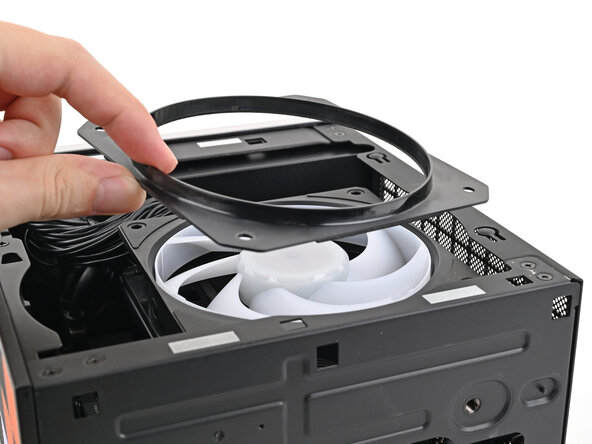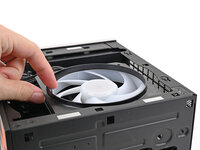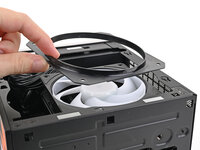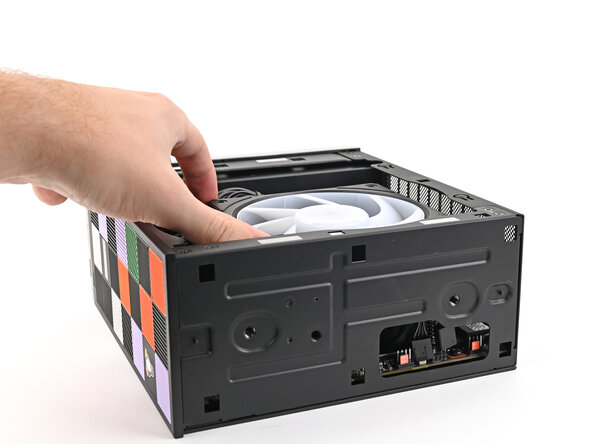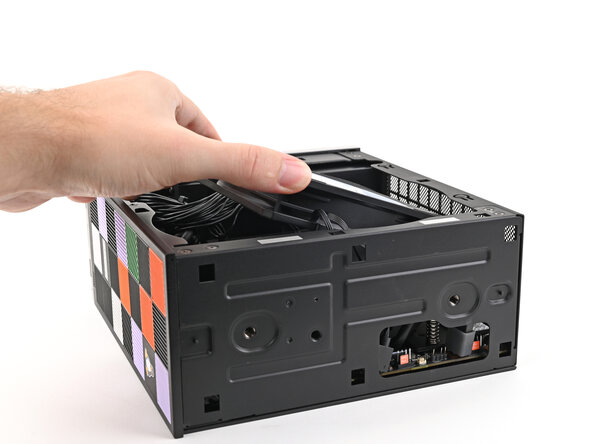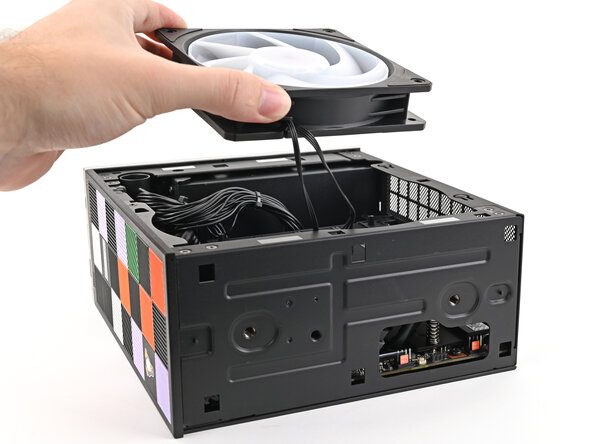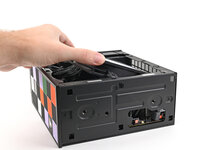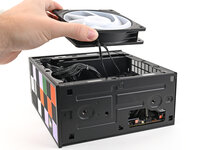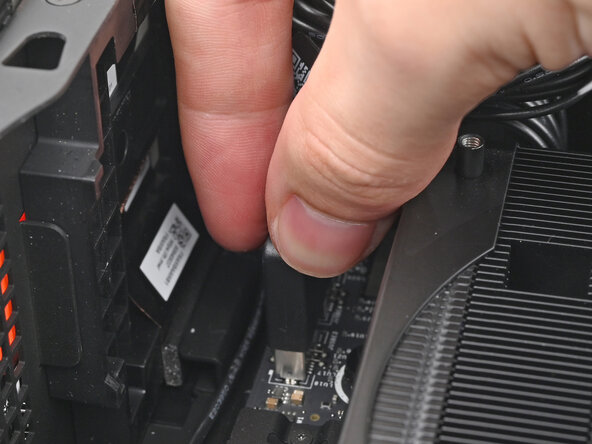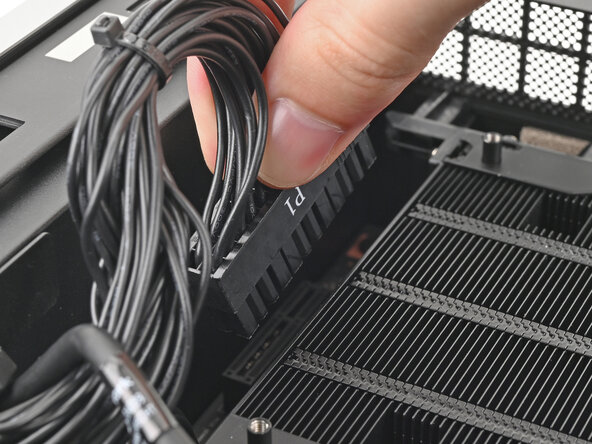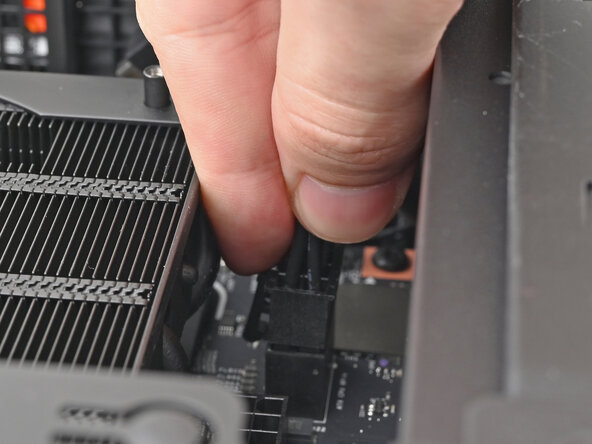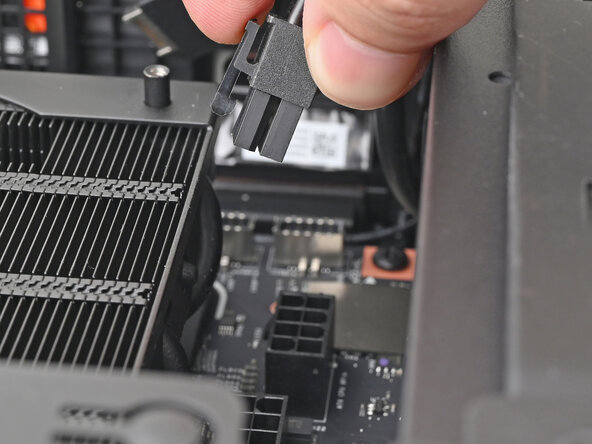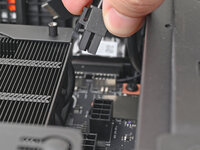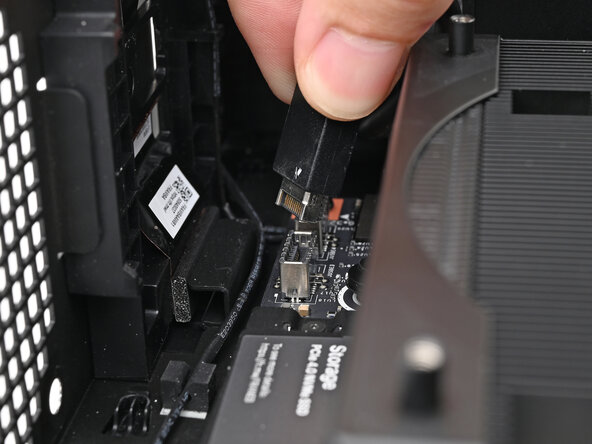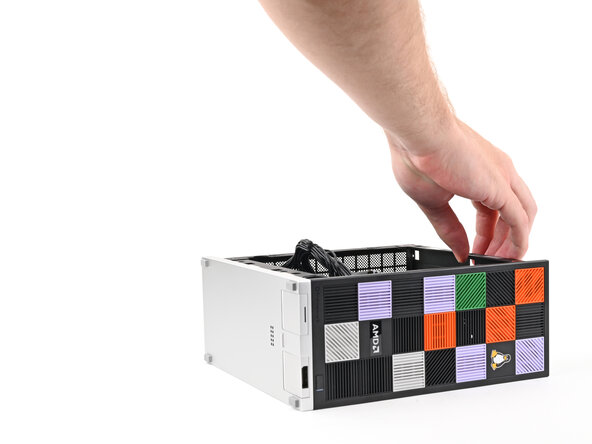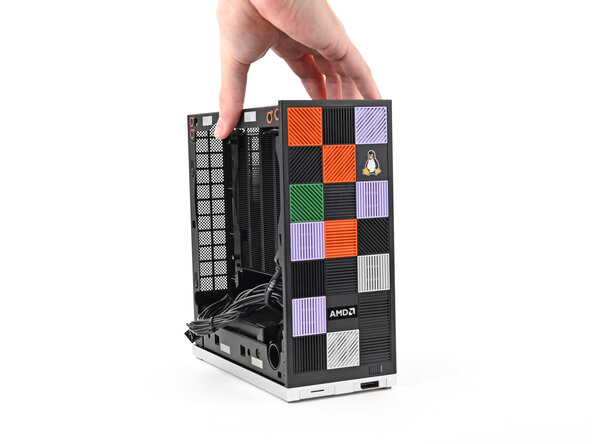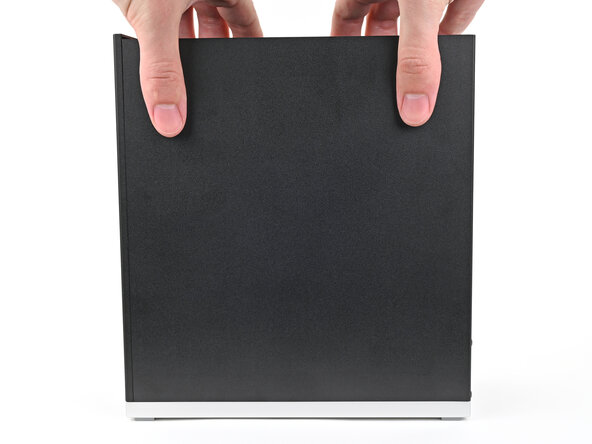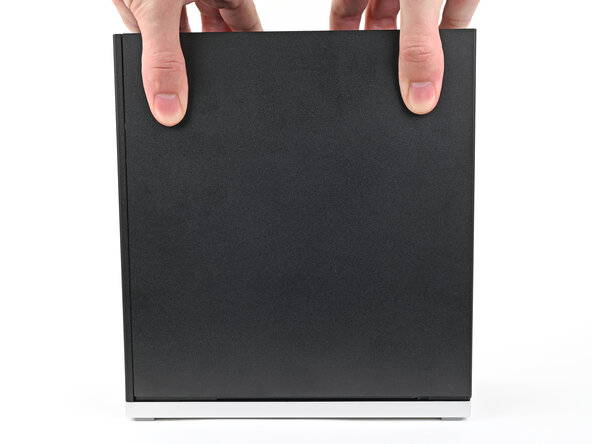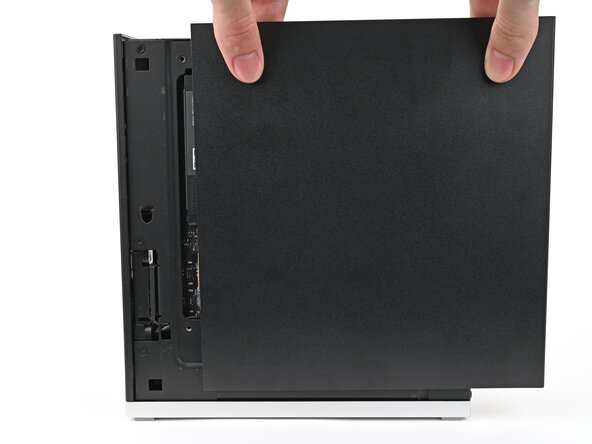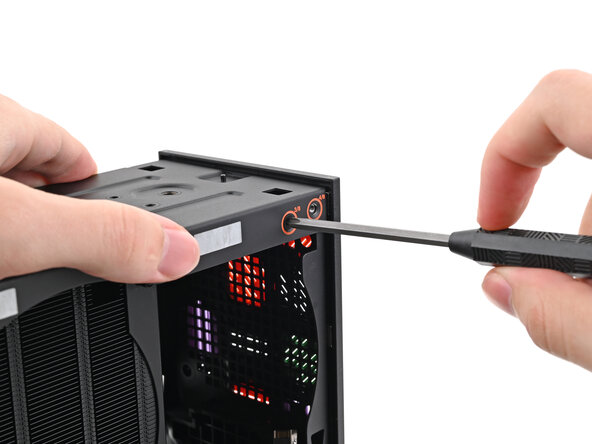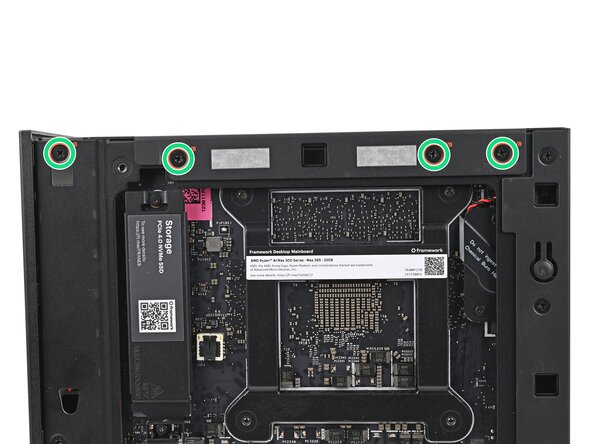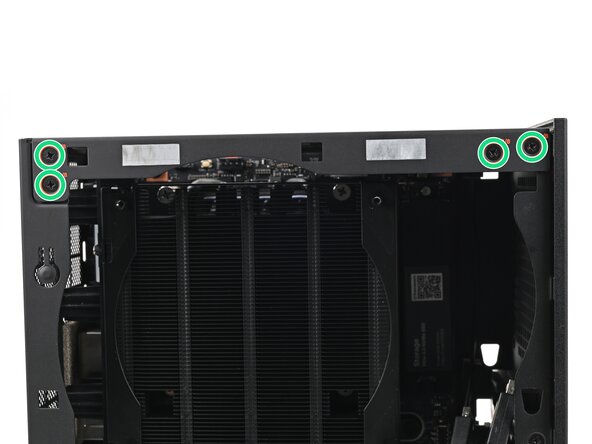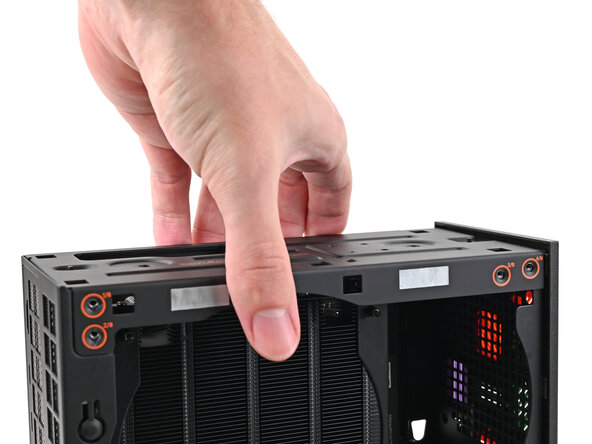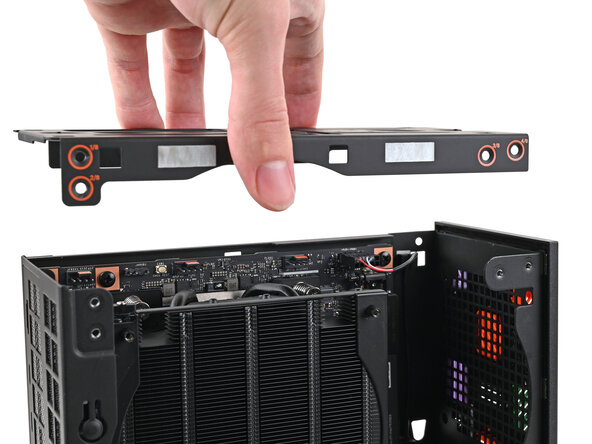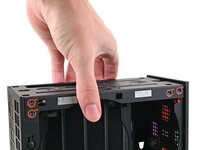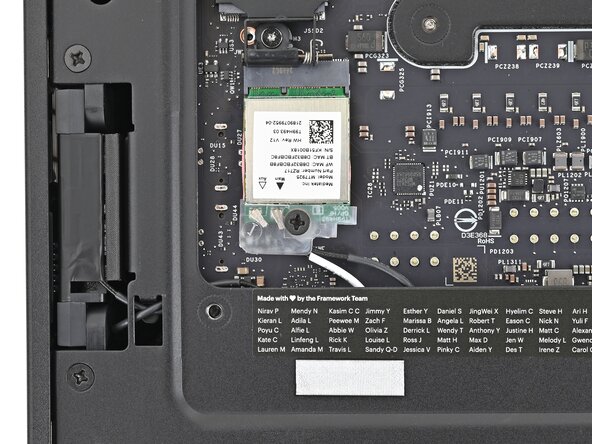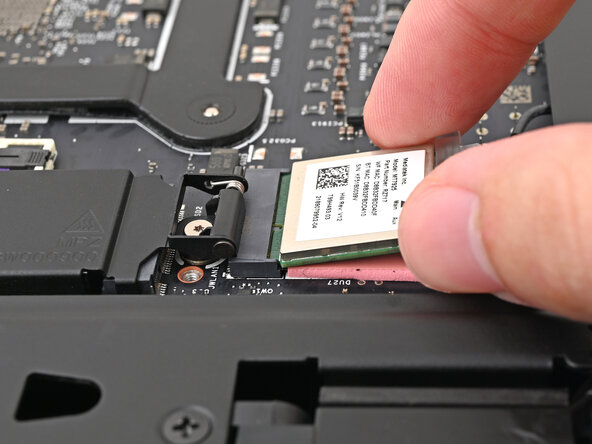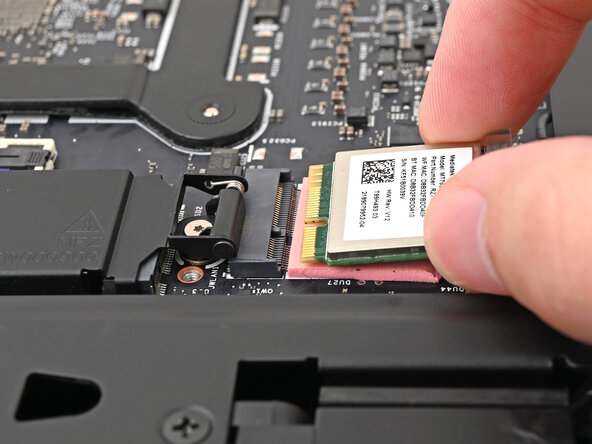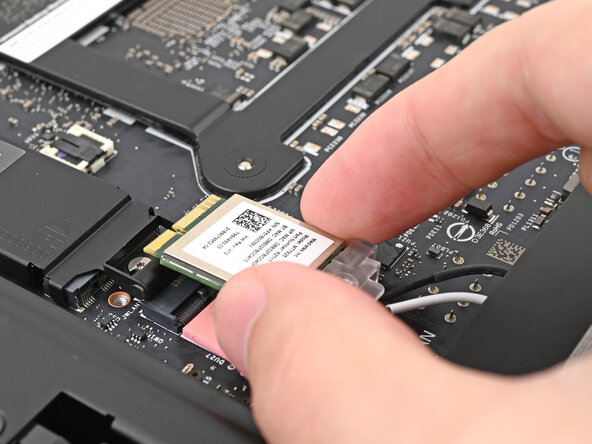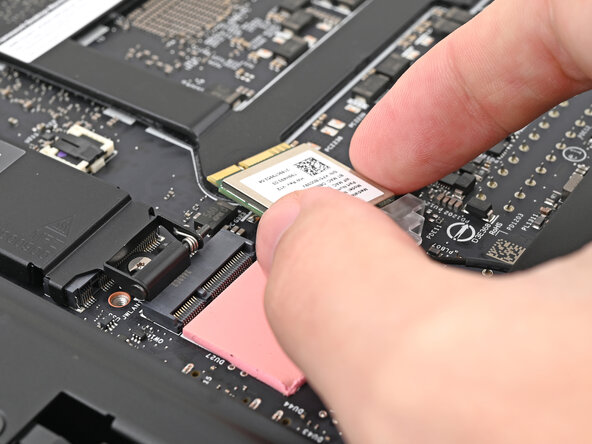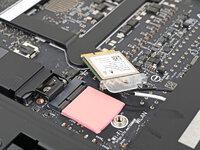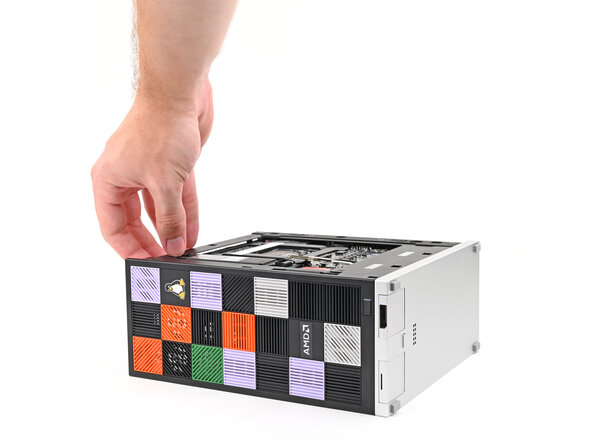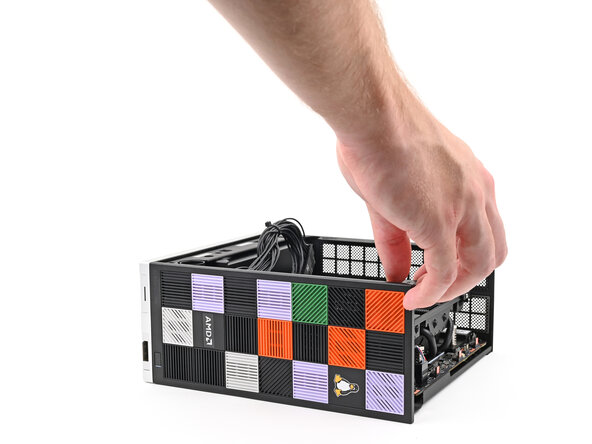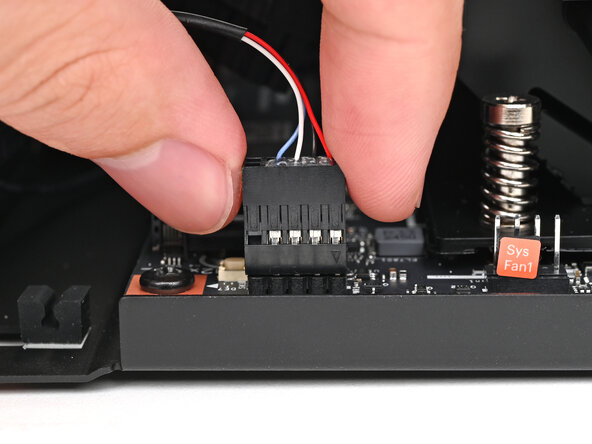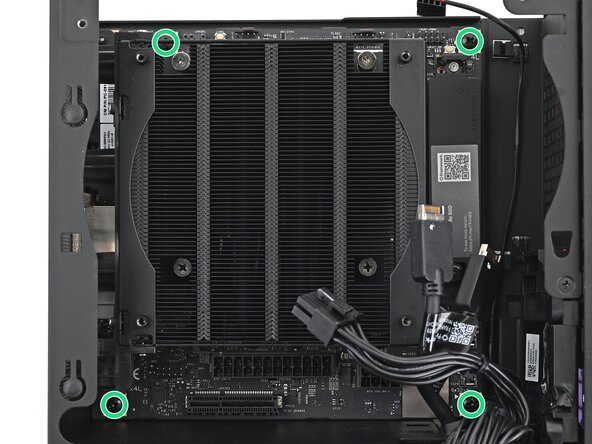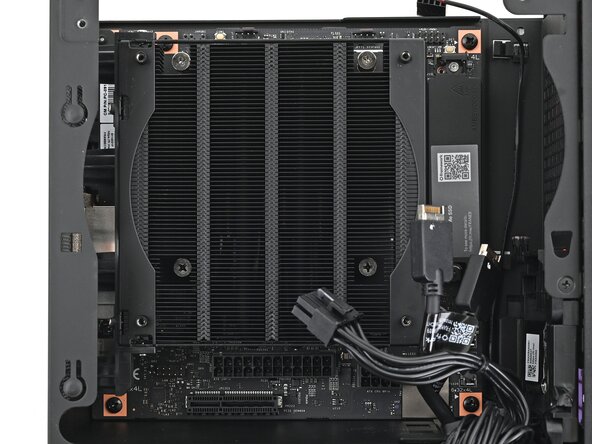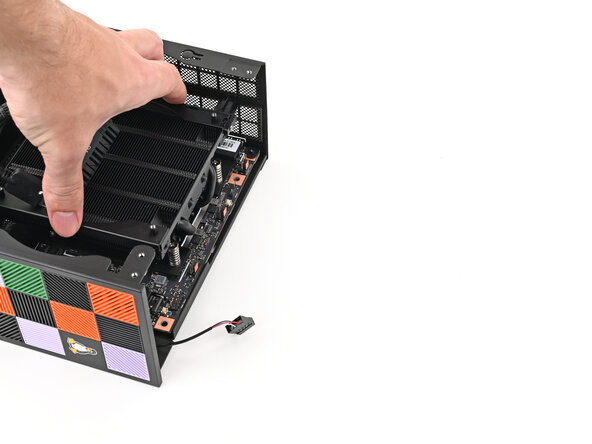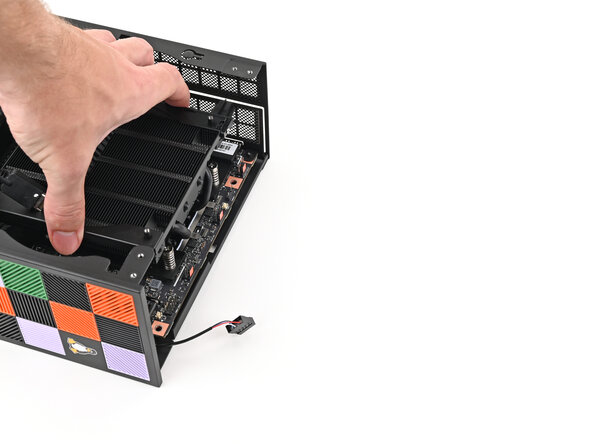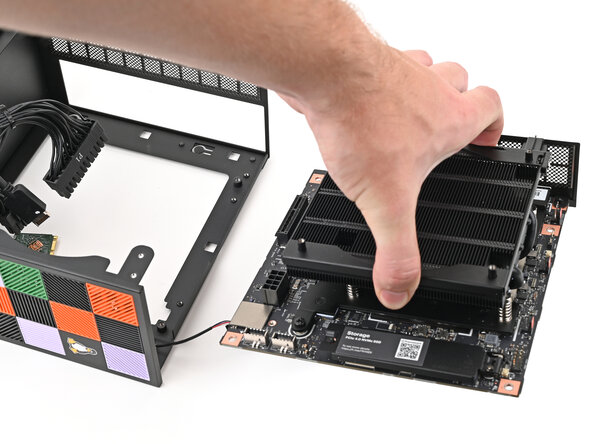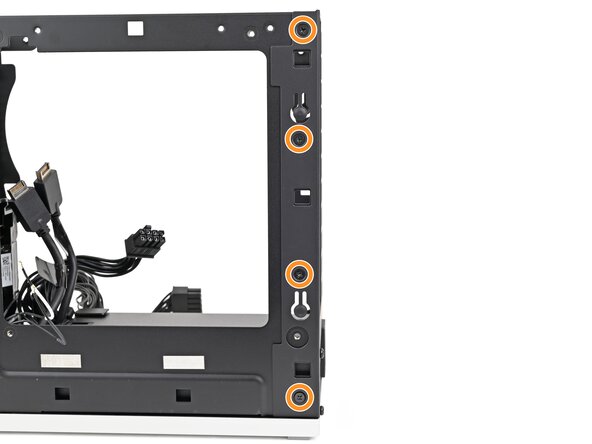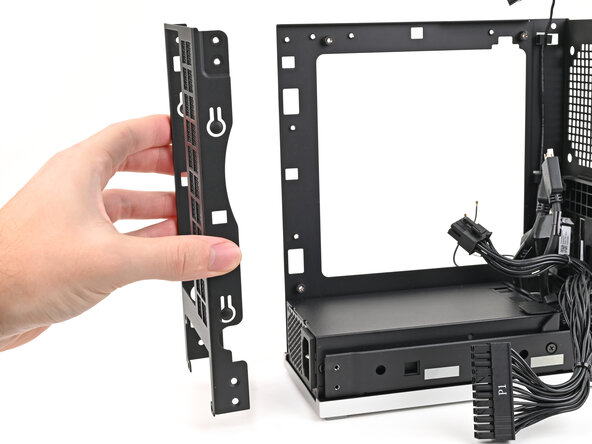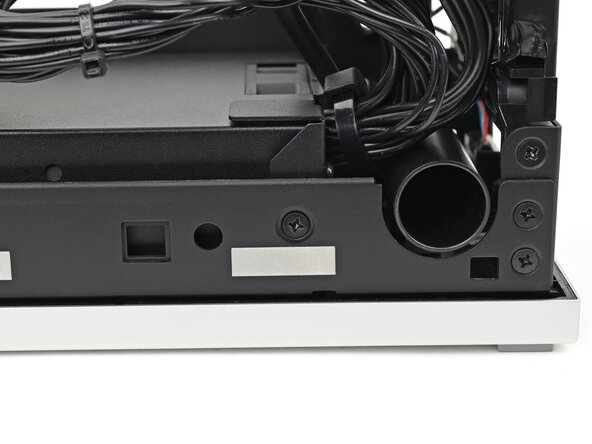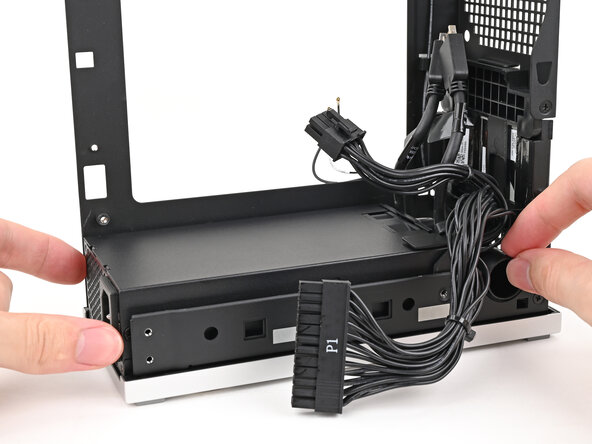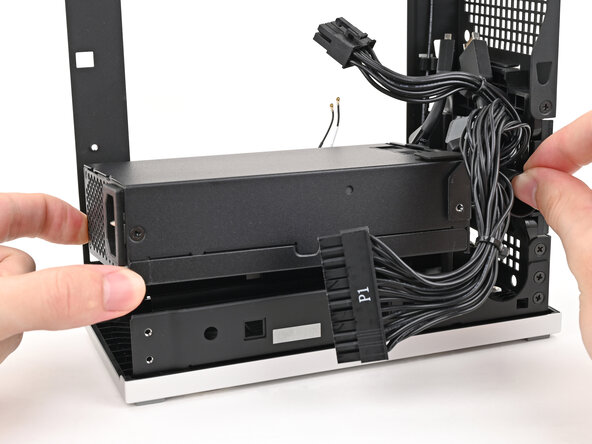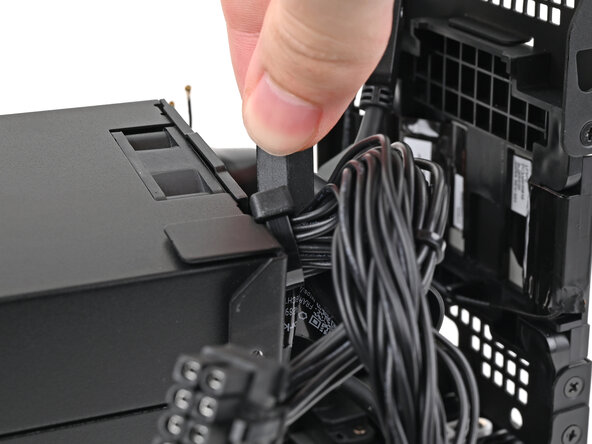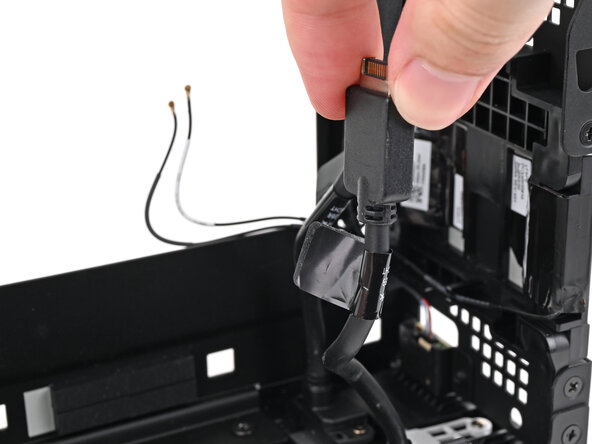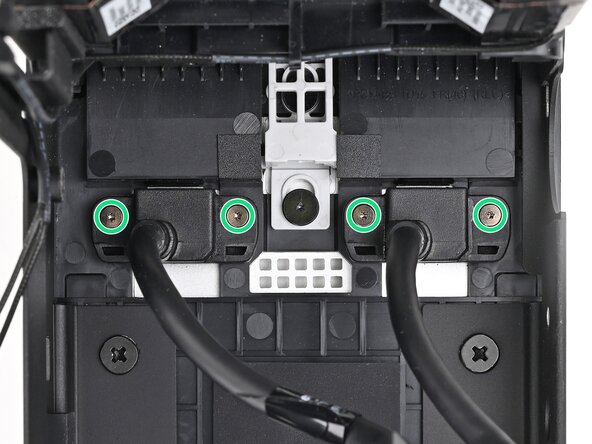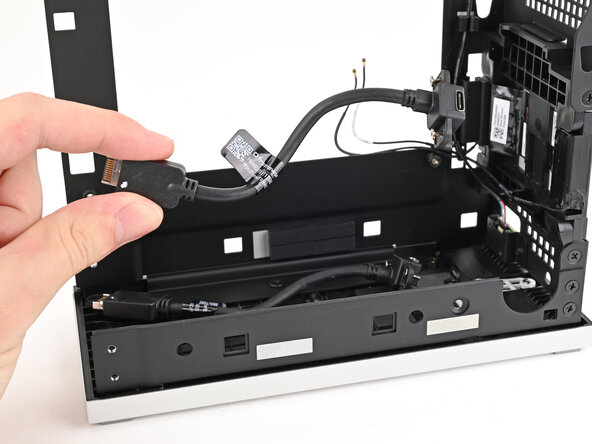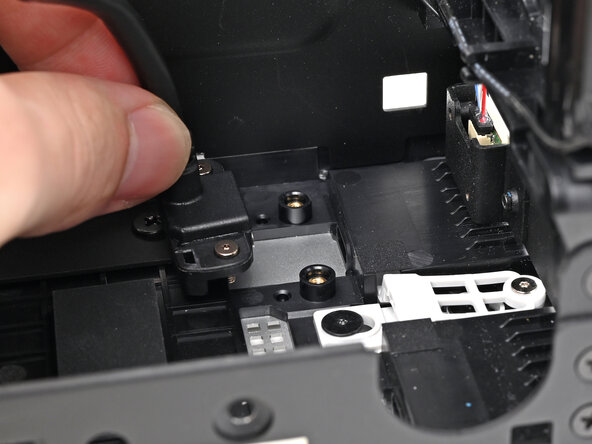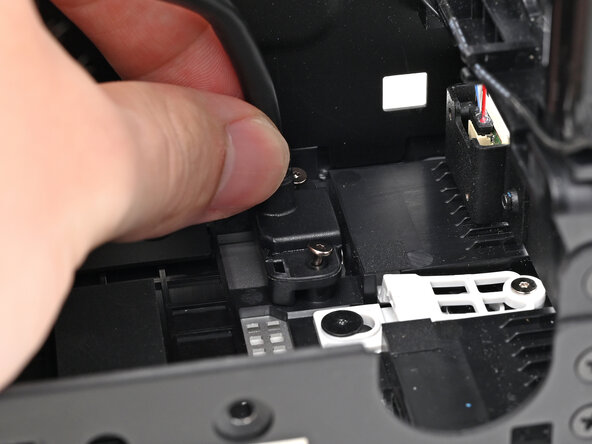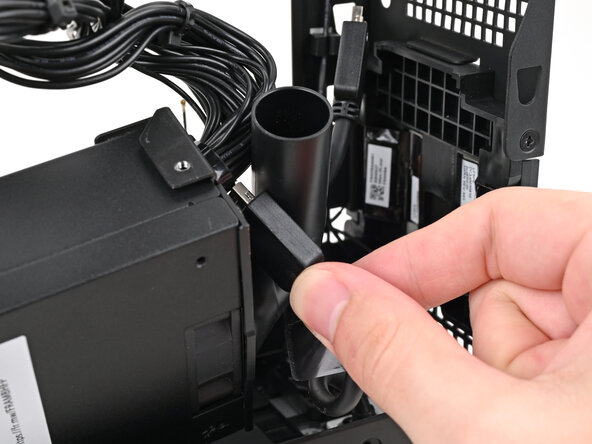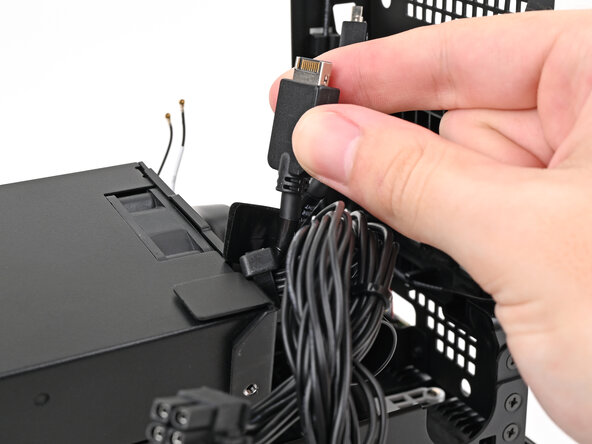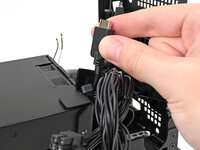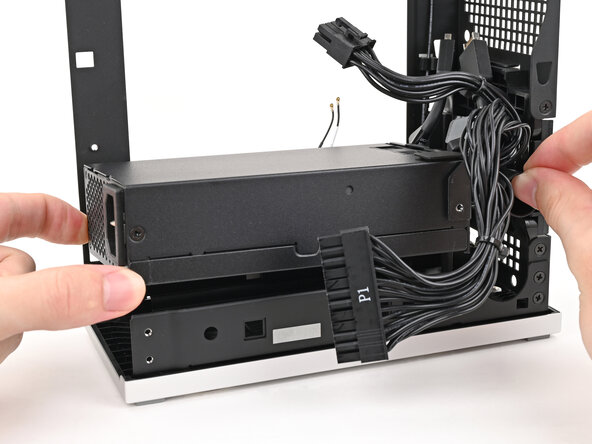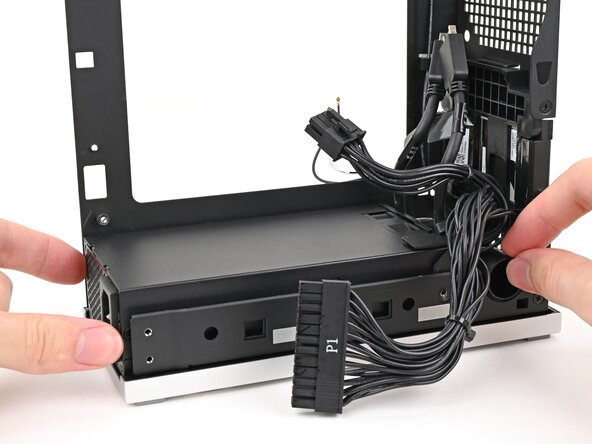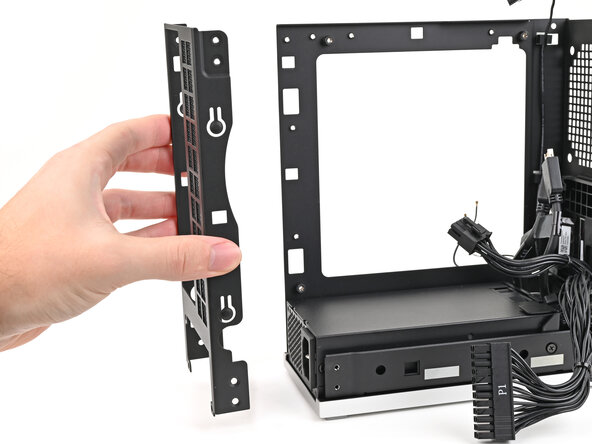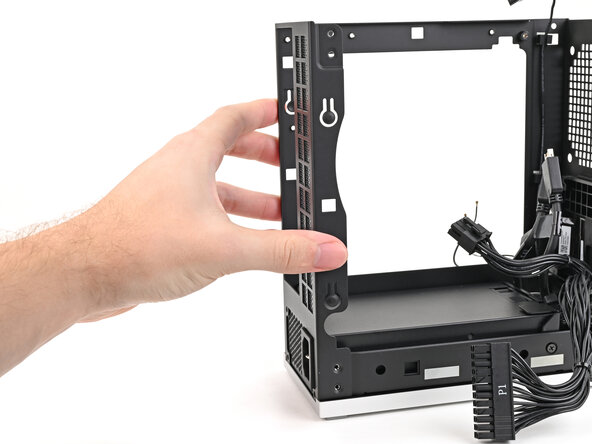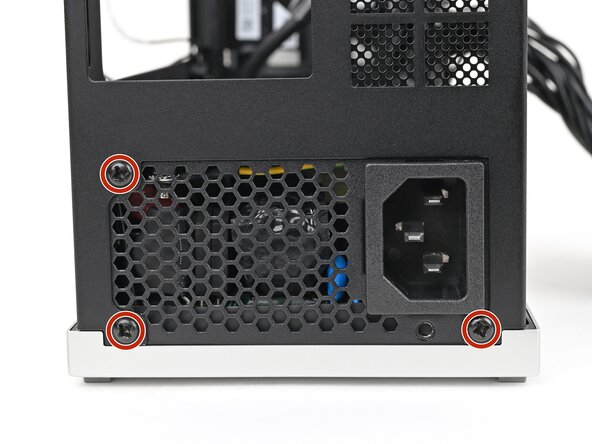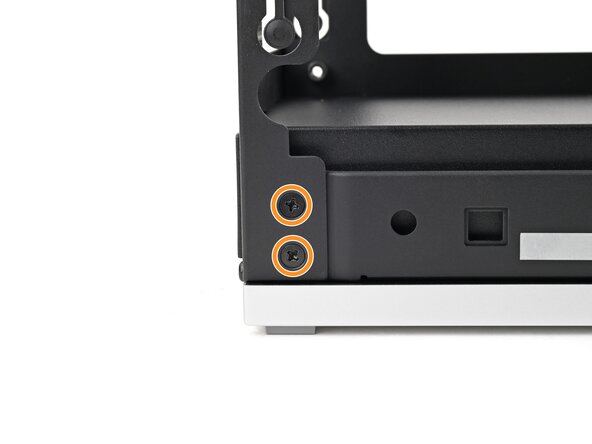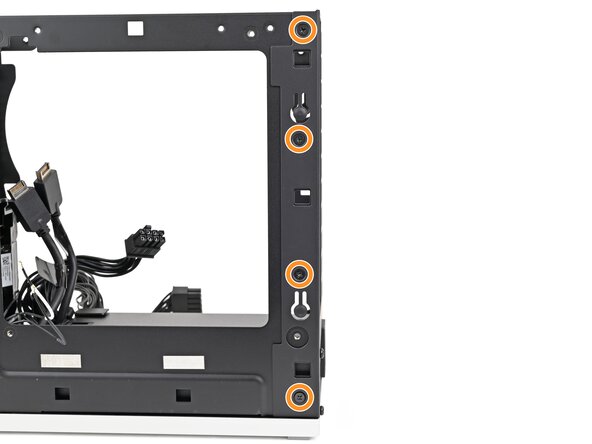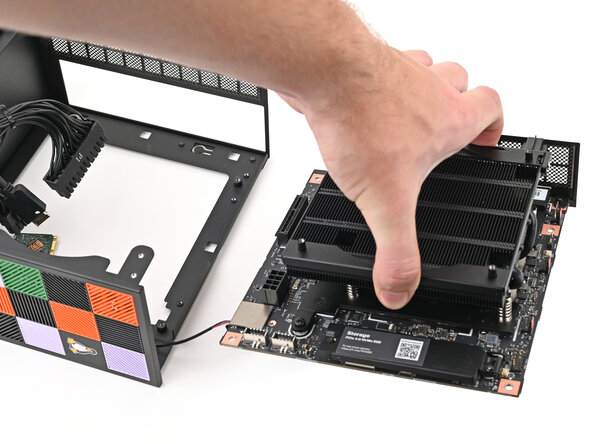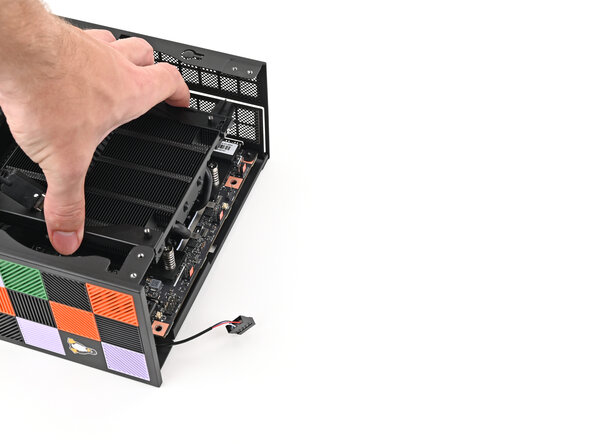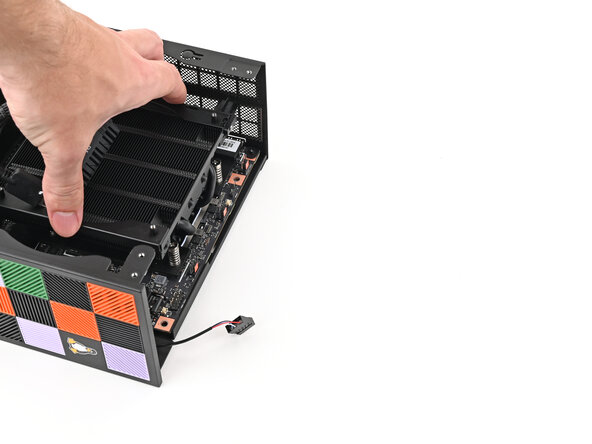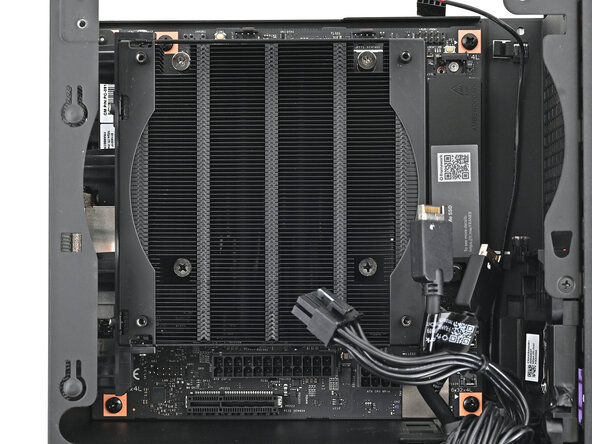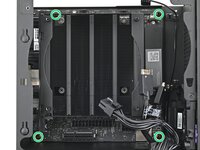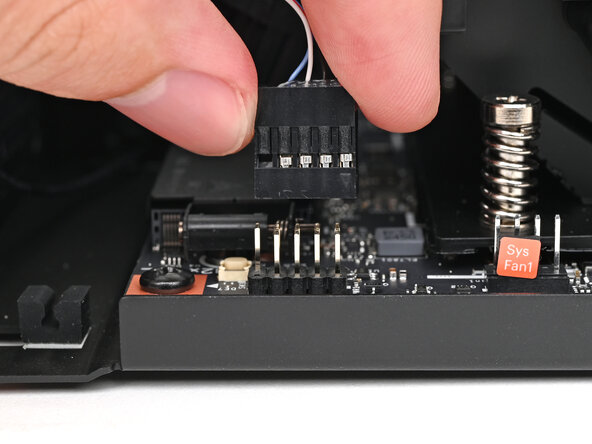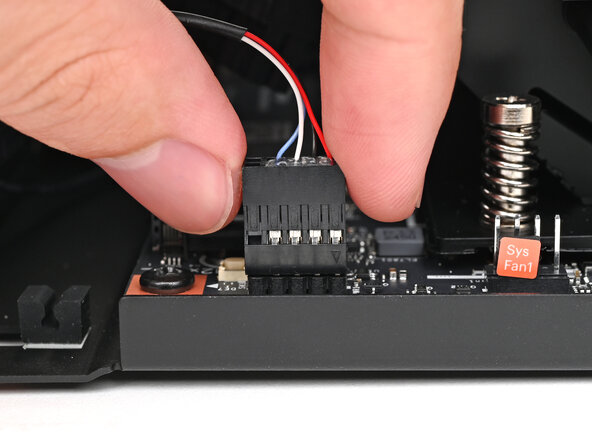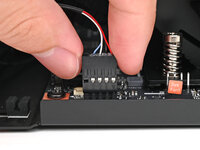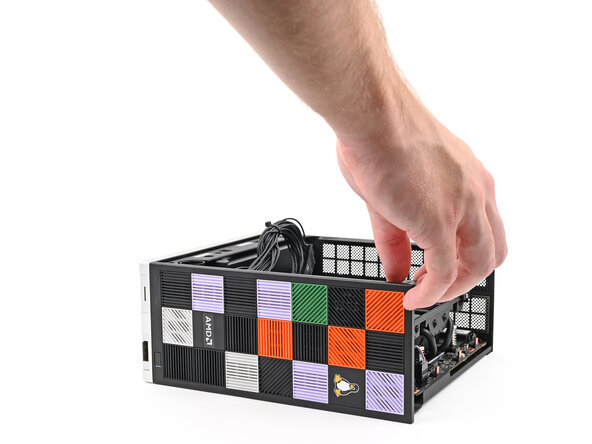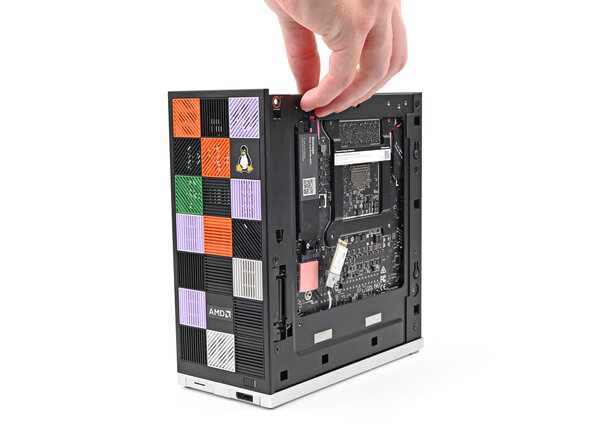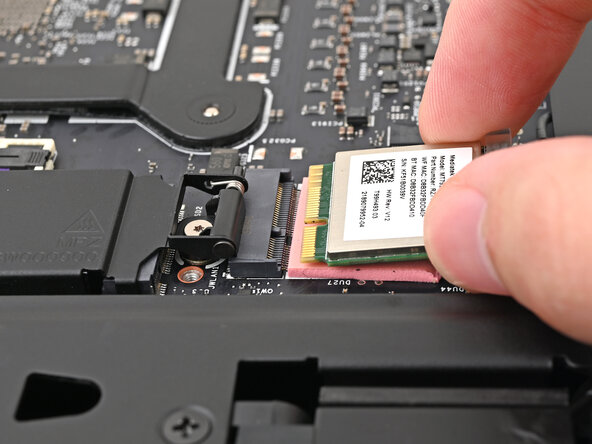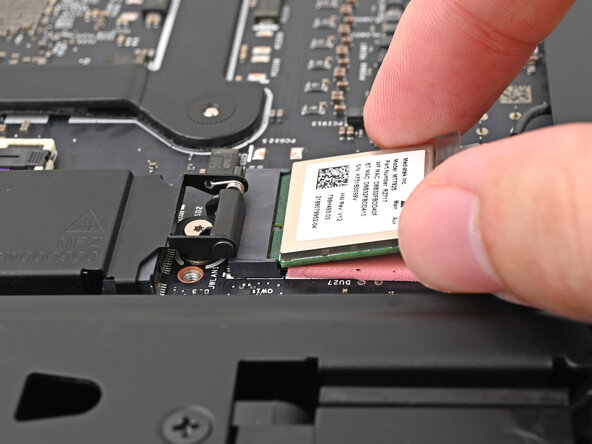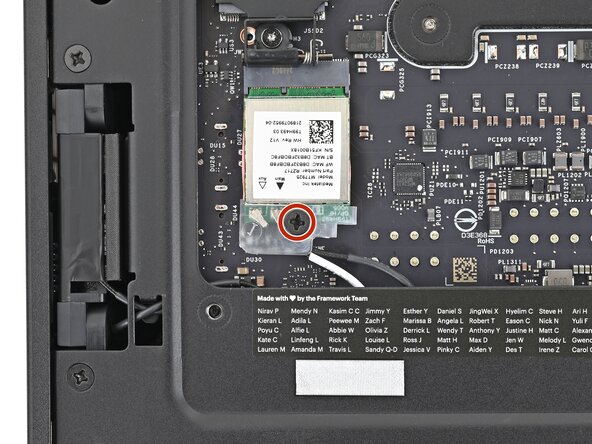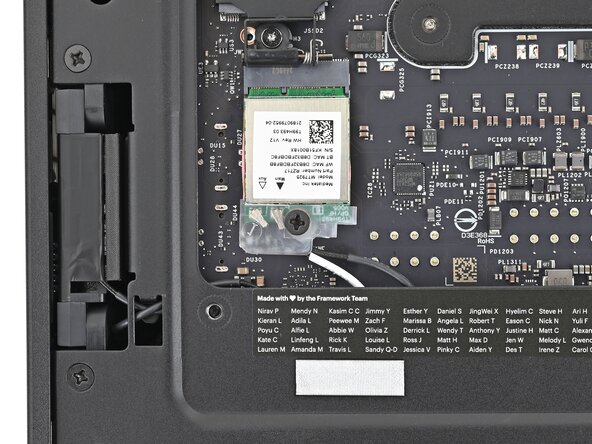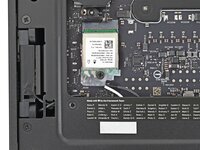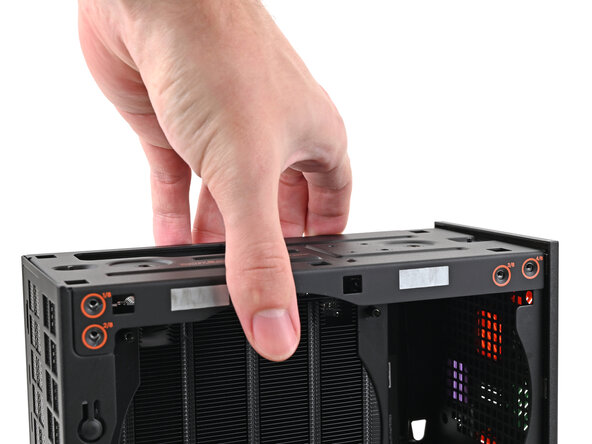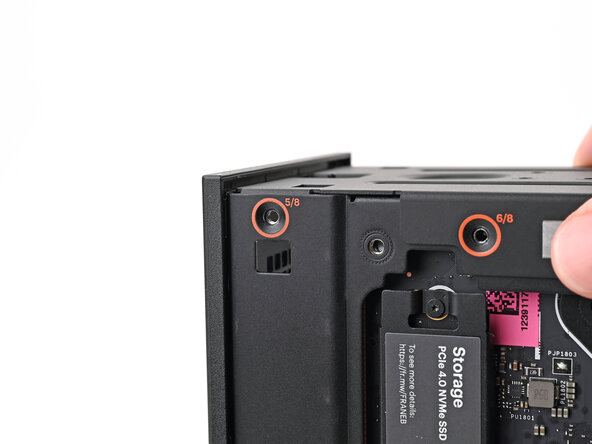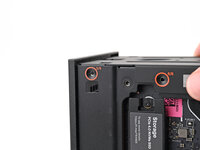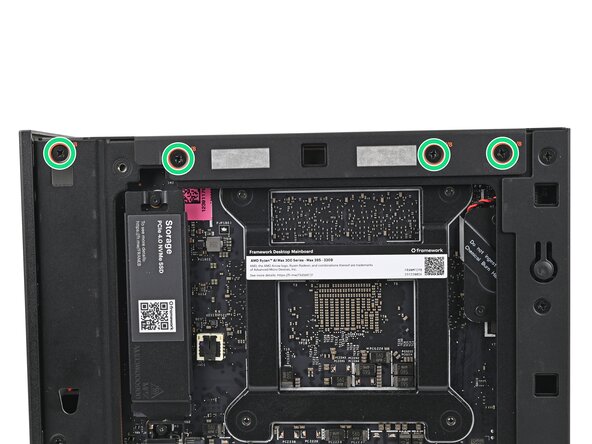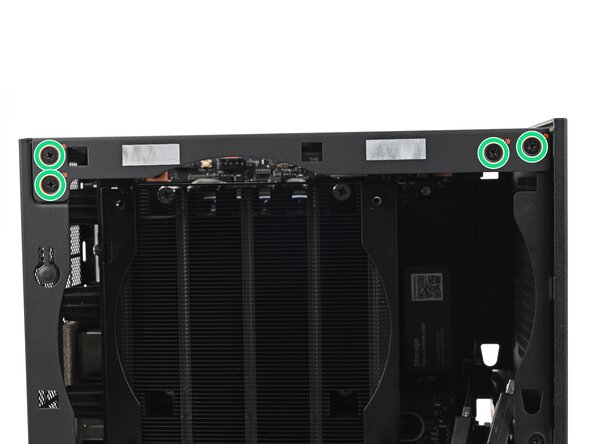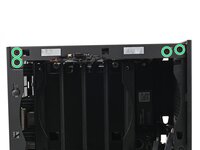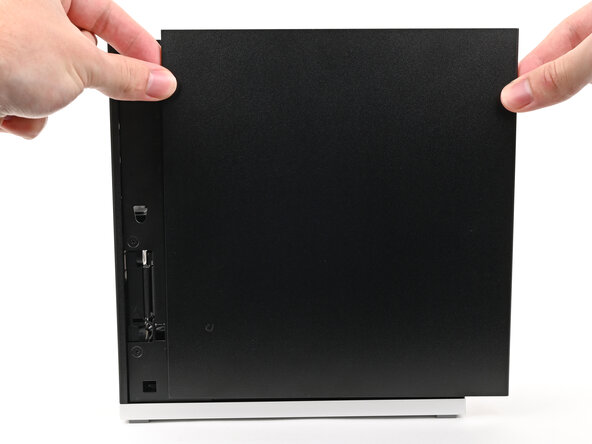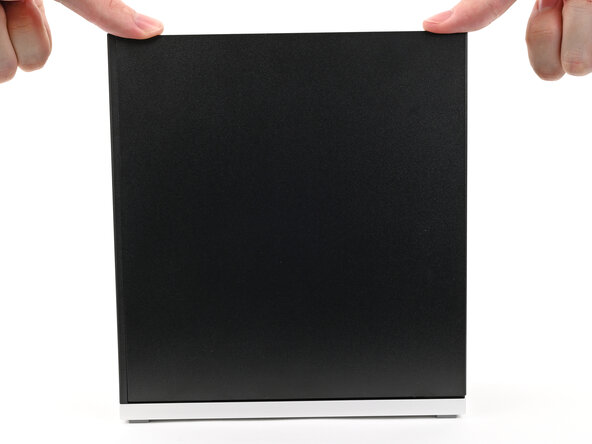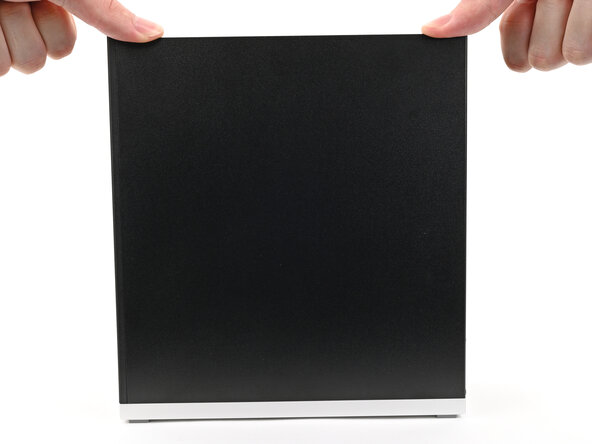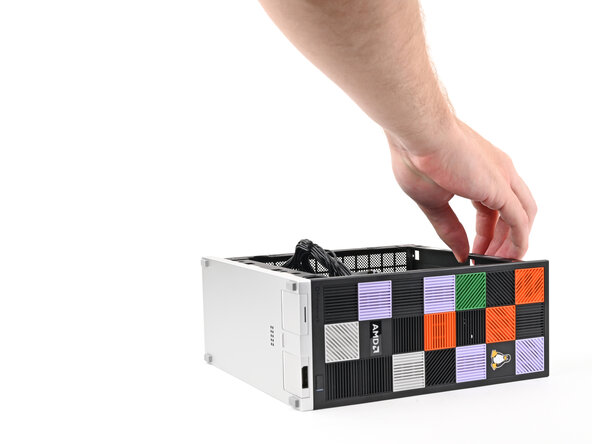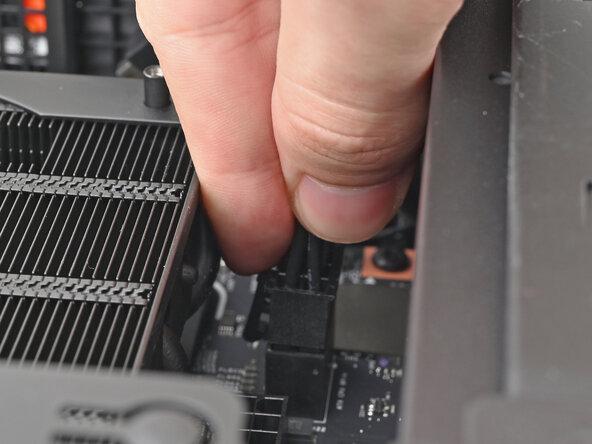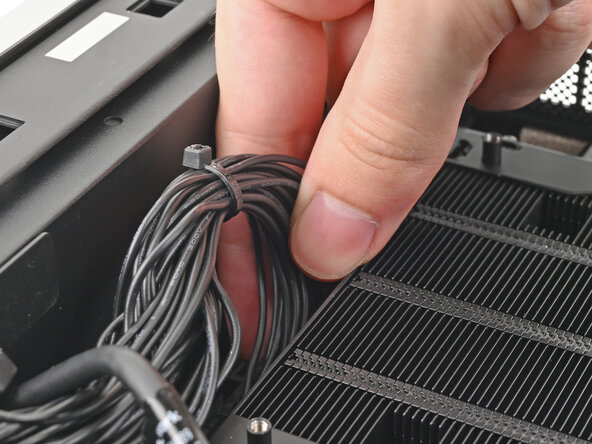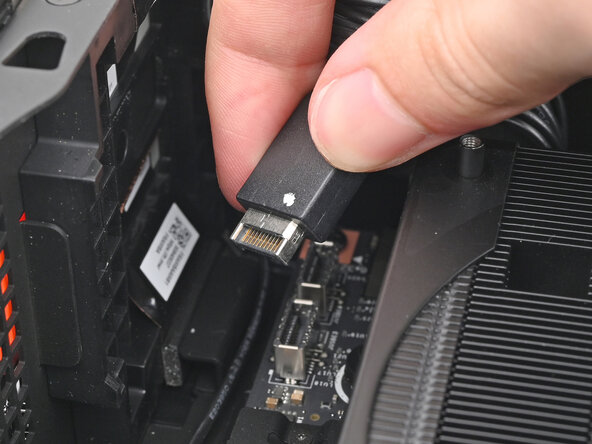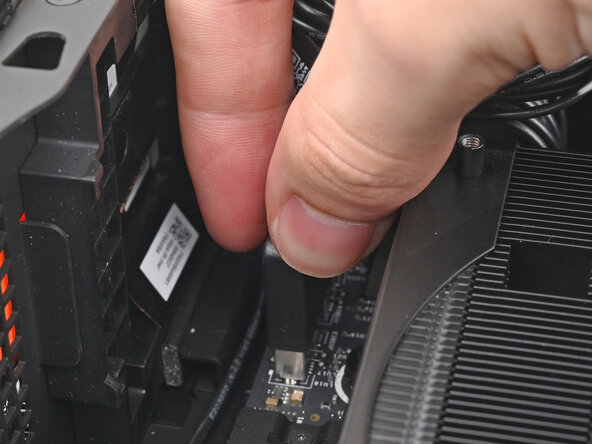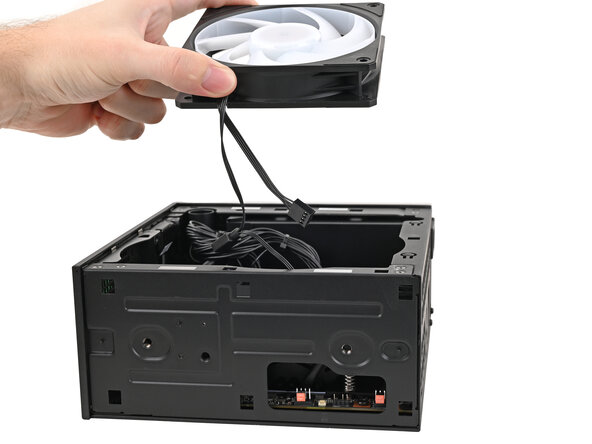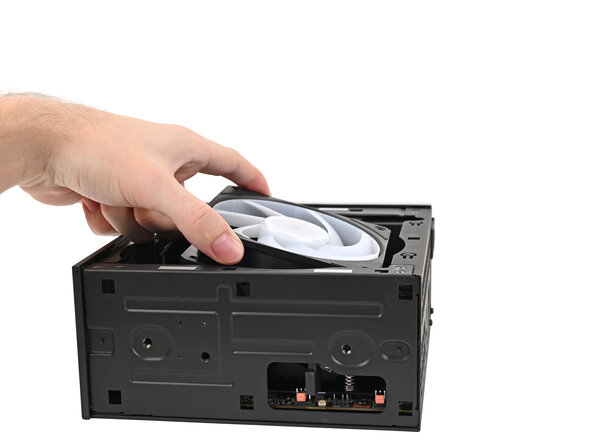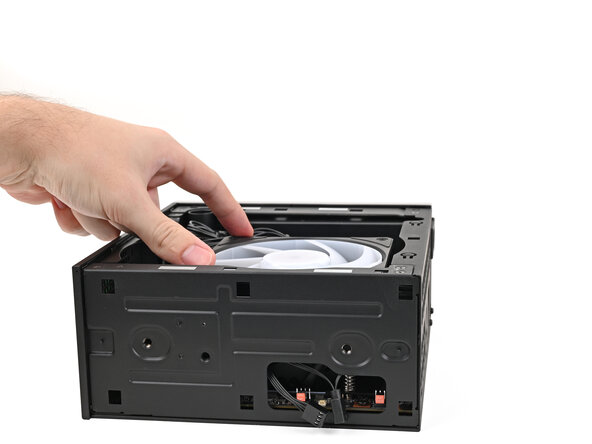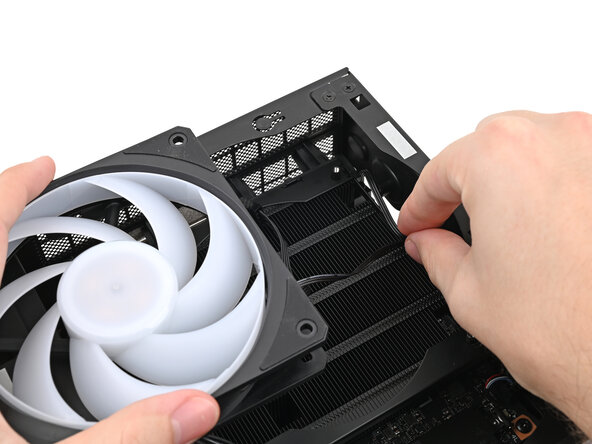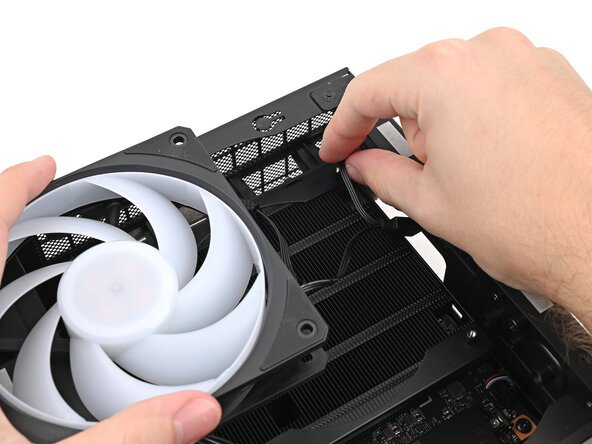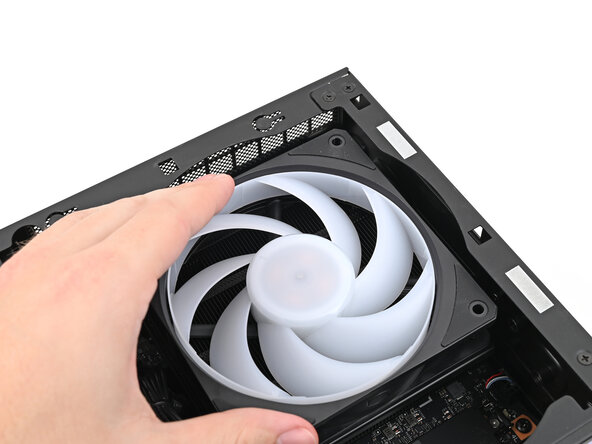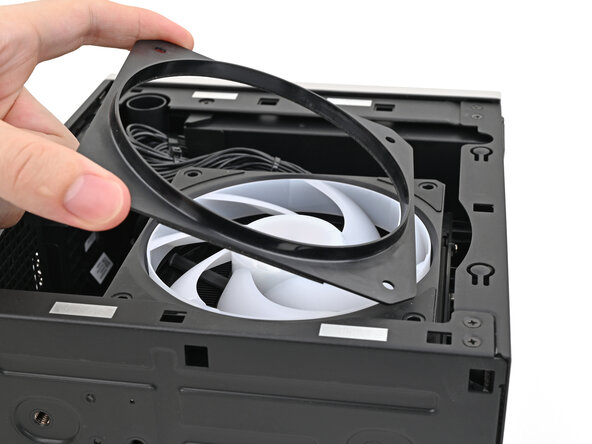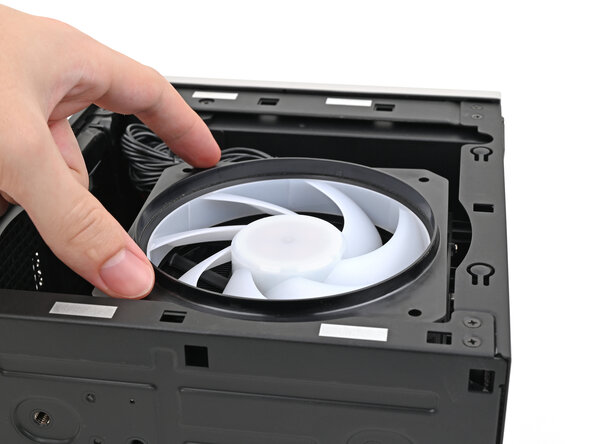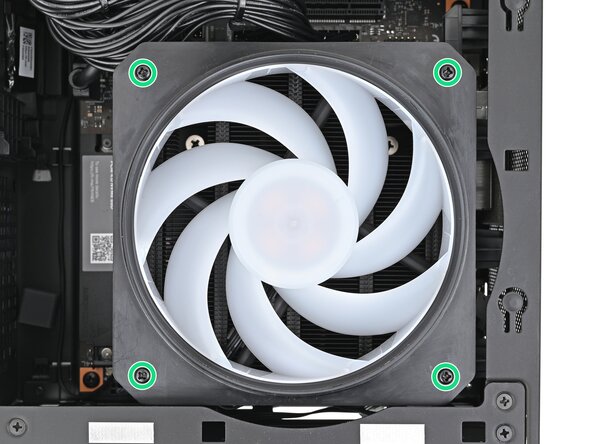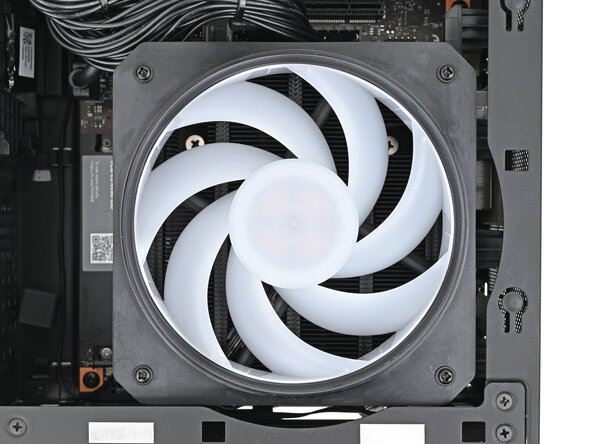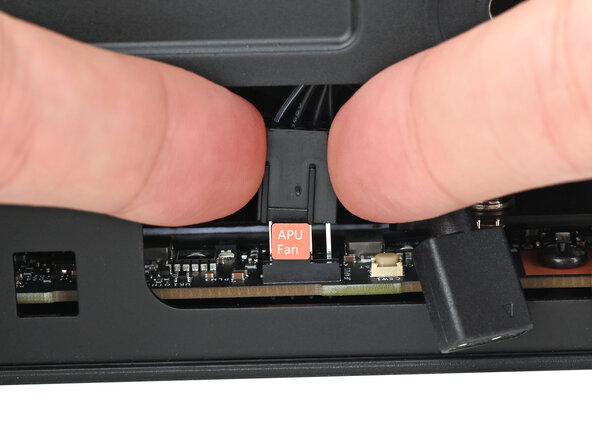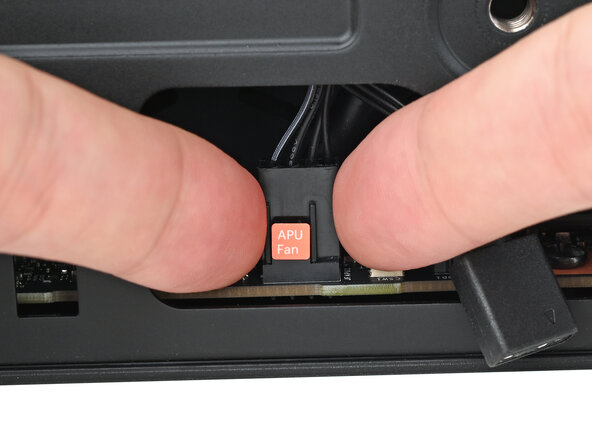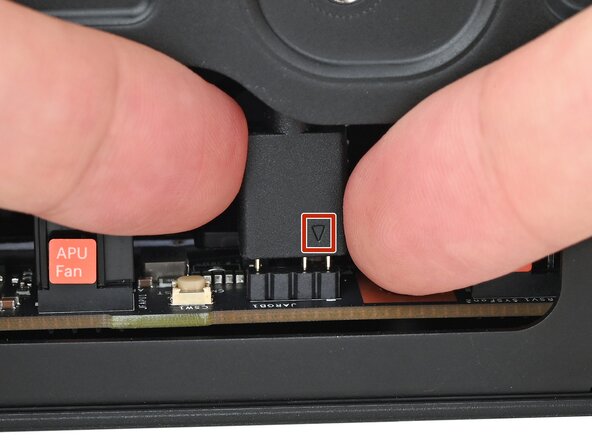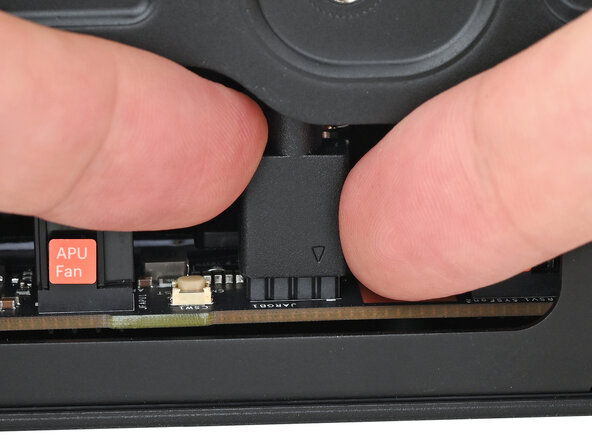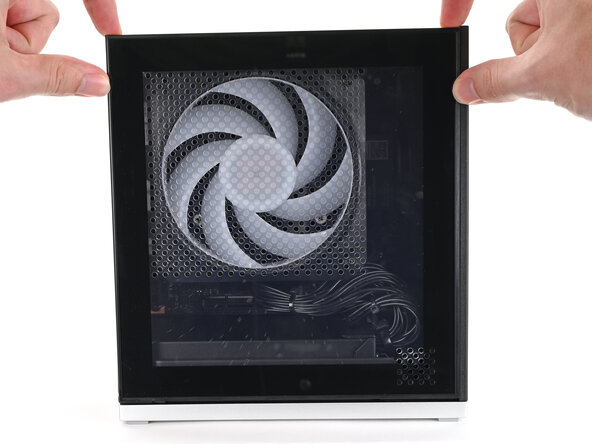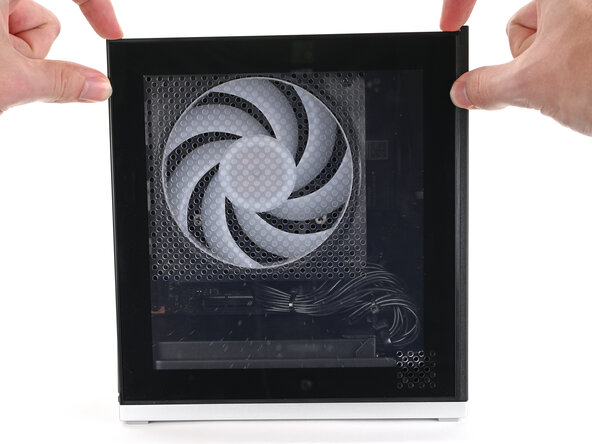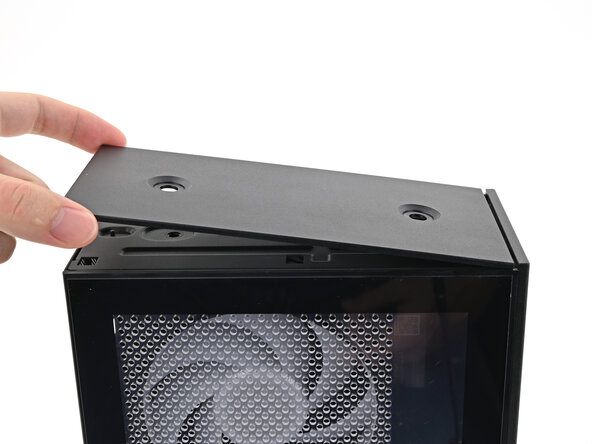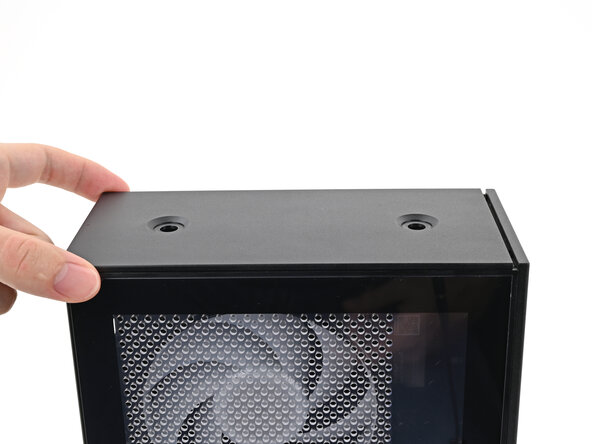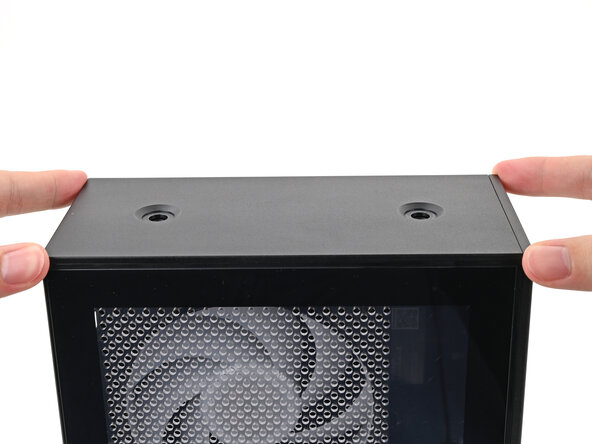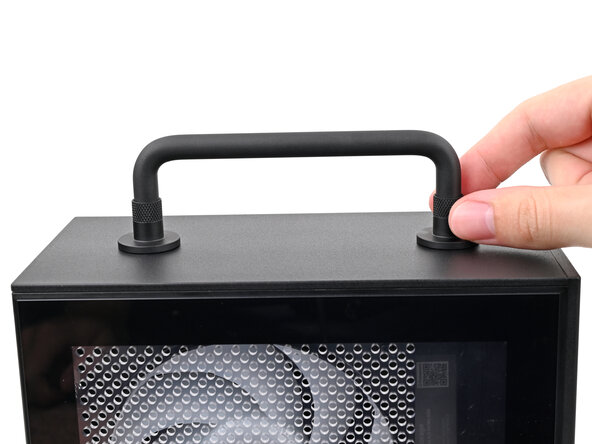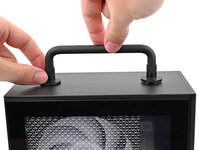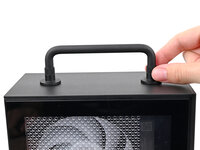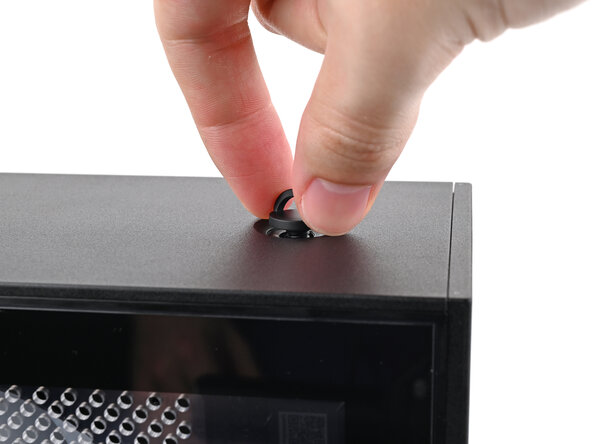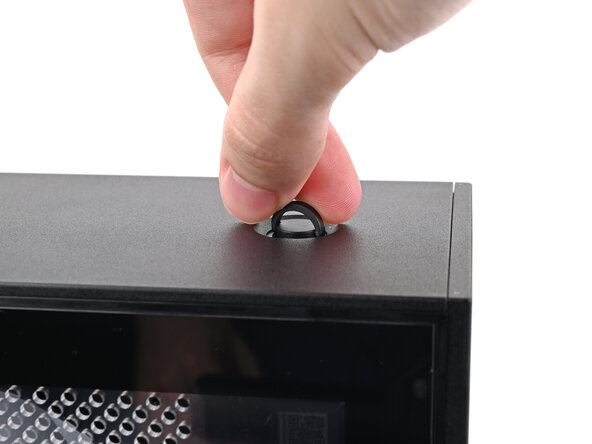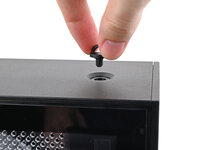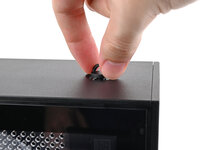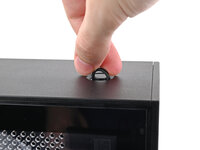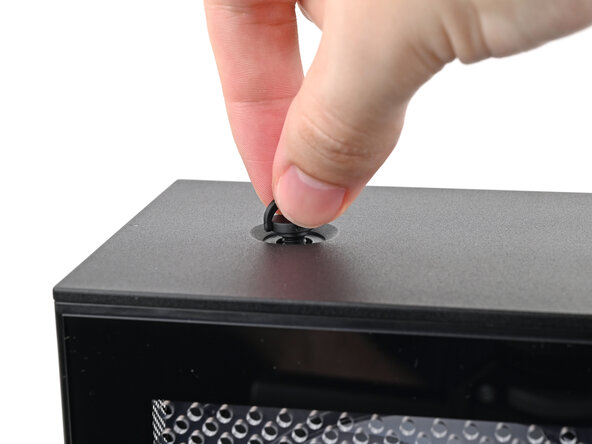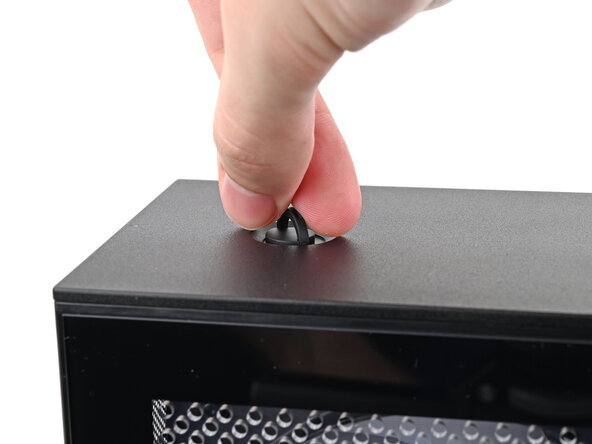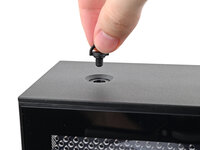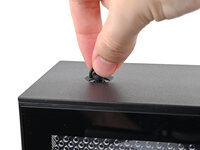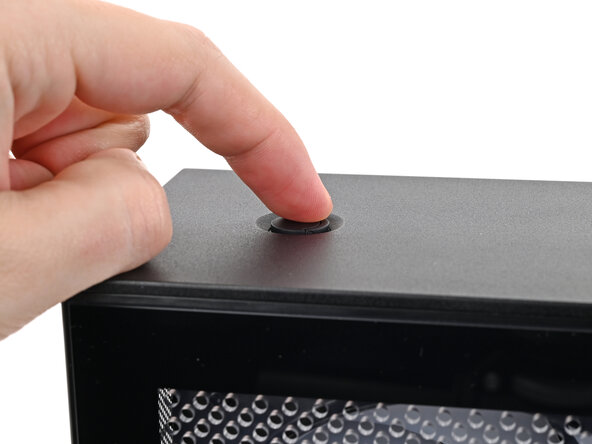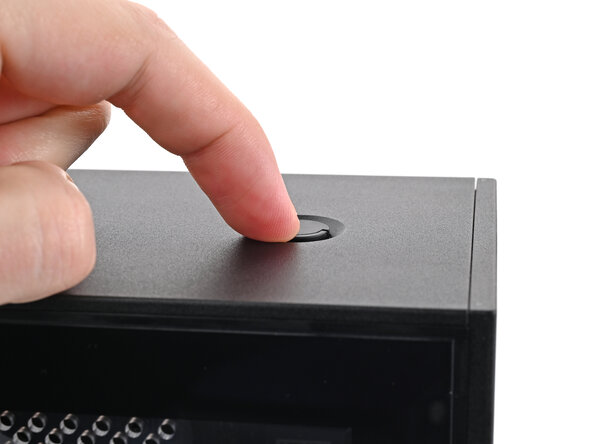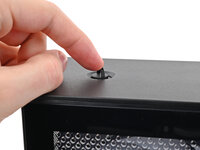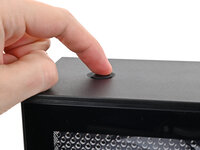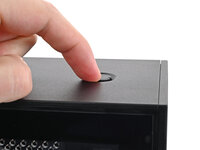crwdns2915892:0crwdne2915892:0
Follow this guide to remove and replace the Expansion Card cables in your Framework Desktop.
These cables connect the two Expansion Card slots at the front of the Desktop to the Mainboard.
crwdns2942213:0crwdne2942213:0
-
-
Before you begin repairs, shut down your Desktop from the operating system and unplug it.
-
Wait one minute before continuing to allow your Desktop to fully power down.
-
-
-
Rotate the Handle's screw threads counterclockwise on both sides until it comes free.
-
Remove the Handle.
-
-
-
Use your finger to lift up the two D-rings on the Top Panel screws.
-
-
-
Use your fingers to twist the screw counter-clockwise and loosen it.
-
Remove the Top Panel screw.
-
-
-
Repeat the same procedure for the other Top Panel screw.
-
-
-
Slide the Top Panel towards the rear of the computer to release the clips securing it to the chassis.
-
Lift the Top Panel off the chassis and remove it.
-
-
-
Use your fingers to grip the top of the Left Panel and slide it upward to release its clips.
-
Remove the Left Panel.
-
-
-
Lay down the Desktop on its side so the fan is facing upward.
-
-
-
Use your fingers to lift the APU fan cable connector off its four‑pronged socket on the Mainboard.
-
-
-
Use your fingers to lift the fan RGB cable connector off its three‑pronged socket on the Mainboard.
-
-
-
Use your Framework Desktop Screwdriver to remove the four 27.3 mm‑long Phillips screws securing the CPU fan and fan duct.
-
-
-
Lift the fan duct off the fan and remove it.
-
-
-
Lift the fan out of the chassis, making sure the cables thread through the side of the heatsink.
-
-
-
Pull the top Expansion Card connector straight out of its socket in the Mainboard to disconnect it.
-
-
-
While squeezing the clip on the main power cable, pull it straight up and out of its socket to disconnect it.
-
-
-
While squeezing the clip on the CPU power cable, pull it straight up and out of its socket to disconnect it.
-
-
-
Pull the bottom Expansion Card connector straight out of its socket in the Mainboard to disconnect it.
-
-
-
Lift the Desktop so it stands upright on your work surface.
-
-
-
Use your fingers to grip the top of the Right Panel and slide it upward to release its clips.
-
Remove the Right Panel.
-
-
-
While holding the Desktop steady, use your Framework Desktop Screwdriver to remove the eight 4.0 mm‑long Phillips screws securing the top plate.
-
-
-
Lift the top plate off the Desktop and remove it.
-
-
-
Lay the left side of the Desktop on your work surface so the underside of the Mainboard is facing upward.
-
-
-
Use your Framework Desktop Screwdriver to remove the 7.0 mm‑long Phillips screw securing the Wi-Fi module.
-
-
-
Grip the Wi-Fi module by its edges and pull it straight out of its socket.
-
-
-
Move the Wi-Fi module towards the center of the Mainboard to keep it out of the way.
-
-
-
-
Rotate the Desktop onto its right side so the Mainboard is facing upward.
-
-
-
Use your fingers to lift the power button cable connector off its nine‑pronged socket on the Mainboard.
-
-
-
Use your Framework Desktop Screwdriver to remove the four 8.2 mm‑long Phillips screws securing the Mainboard.
-
-
-
Grab the Mainboard by its heatsink and pull it towards the front of the Desktop to slide it out of the rear port cutout.
-
Slide the Mainboard towards the top of the Desktop to remove it from the chassis.
-
-
-
Use your Framework Desktop Screwdriver to remove the three 5.9 mm‑long Phillips screws securing the power supply.
-
Optionally, you can remove the six 4.0 mm‑long screws securing the rear plate to make removing the power supply easier.
-
-
-
Pull the rear plate off the back of the Desktop and remove it.
-
-
-
Use your Framework Desktop Screwdriver to remove the 4.0 mm‑long Phillips screw securing the power supply.
-
-
-
Lift the power supply out of its slot and let it rest on the left side of the Desktop.
-
-
-
Push the right Expansion Card cable through the gap between the power supply and its duct.
-
Remove the power supply.
-
-
-
Use your Framework Desktop Screwdriver to loosen the four captive T5 Torx screws securing the two Expansion Card cables.
-
-
-
Lift the Expansion Card cables out of the Desktop and remove them.
-
-
-
Congratulations on completing disassembly! The remaining steps will show how to reassemble your Framework Desktop.
-
-
-
Insert the the Expansion Card cable into its slot and align it over its two screw pegs.
-
Repeat for the other Expansion Card cable.
-
-
-
Use your Framework Desktop Screwdriver to install the four captive T5 Torx screws securing the two Expansion Card cables.
-
-
-
Thread the right Expansion card cable through the gap between the power supply and its duct.
-
-
-
Place the power supply into its slot in the bottom of the Desktop.
-
-
-
Use your Framework Desktop Screwdriver to install the 4.0 mm‑long Phillips screw securing the power supply.
-
-
-
Place the rear plate onto the back of the Desktop.
-
-
-
Use your Framework Desktop Screwdriver to install the three 5.9 mm‑long Phillips screws securing the power supply.
-
If you removed the rear plate, install the six 4.0 mm‑long screws securing the rear plate.
-
-
-
Grab the Mainboard by its heatsink and slide it into the chassis.
-
Align the rear ports with its cutout and the screw posts with the screw holes on the Mainboard.
-
Make sure no cables are trapped underneath the Mainboard before continuing.
-
-
-
Use your Framework Desktop Screwdriver to install the four 8.2 mm‑long Phillips screws securing the Mainboard.
-
-
-
Slide the power button cable over the nine-pronged connector on the Mainboard.
-
-
-
Rotate the Desktop onto its left side so the underside of the Mainboard is facing upward.
-
-
-
Align the Wi-Fi module's gold contacts and notch with the socket on the Mainboard.
-
Insert the Wi-Fi module into the socket at a shallow angle. The gold contacts should mostly be covered by the socket.
-
-
-
Use your Framework Desktop Screwdriver to install the 7.0 mm‑long Phillips screw securing the Wi-Fi module.
-
-
-
Rotate the Desktop so it sits upright on your work surface.
-
-
-
Place the top plate on top of the Desktop, making sure it slots into the chassis so the orange circles are visible.
-
-
-
Make sure the matching screw hole on the top plate labeled "5/8" is slotted on the inside of the Chassis so that the orange circle is visible.
-
-
-
While holding the Desktop steady, use your Framework Desktop Screwdriver to install the eight 4.0 mm‑long Phillips screws securing the top plate.
-
-
-
Slide the Right Panel onto the right edge of the chassis, from top to bottom, and press it flat to ensure its clips are slotted into place.
-
Push the Right Panel towards the base of the computer to engage the clips.
-
-
-
Lay the right side of the Desktop on your work surface so the Mainboard is facing upward.
-
-
-
Slide the bottom Expansion Card cable into its socket on the Mainboard.
-
-
-
Orient the CPU power supply cable so its clip is facing the heatsink.
-
Slide the cable into its socket on the Mainboard until you feel it click into place.
-
-
-
Orient the main power supply cable so its clip is facing away from the heatsink.
-
Slide the cable into its socket on the Mainboard until you feel it click into place.
-
-
-
Slide the top Expansion Card cable into its socket on the Mainboard.
-
-
-
Orient the fan so its label is facing downward and the cable(s) is pointing towards the top of the computer.
-
Lay the fan on top of the heatsink, making sure the cables are routed so they poke out of the hole on the top of the computer.
-
-
-
If the cables aren't routed properly, lift the fan up slightly and use your fingers to reposition the cables over the side of the heatsink.
-
-
-
Lay the fan duct on top of the fan with the lip facing upward.
-
Align the screw holes on the fan duct with the ones on the fan.
-
-
-
Use your Framework Desktop Screwdriver to install the four 27.3 mm‑long screws securing the fan and fan duct.
-
-
-
Orient the main fan cable so its two vertical lines are facing you.
-
Slide the main fan cable over the four-pronged connector labeled "APU Fan," making sure the orange label slots between the vertical lines.
-
-
-
Orient the RGB cable so the arrow is on the right side of the connector.
-
Use your fingers to slide the RGB cable over the three pronged connector located to the right of the "APU Fan" connector.
-
-
-
Slide the Left Panel onto the left edge of the chassis and press it flat to ensure its clips are slotted into place.
-
Push the Left Panel towards the base of the computer to close the gap and engage the clips.
-
-
-
Orient the Top Panel so its arrow is pointing towards the rear of the computer.
-
While holding the Top Panel at a slight downward angle, slide it across the top of the chassis (from rear to front) until you feel its clips catch.
-
Lay the Top Panel flat on the chassis to align the remaining clips.
-
-
-
While securing the computer with one hand, use the other hand to slide the Top Panel towards the front of the computer to close the gap and engage the clips.
-
-
-
Place the Handle over the Top Panel screw holes.
-
While holding the Handle in place, twist the screw threads on both sides clockwise until they're snug on the Top Panel.
-
-
-
Insert the top panel screw into its hole and twist clockwise until it feels snug.
-
-
-
Repeat the same procedure for the other top panel screw.
-
-
-
Use your finger to close the two D-rings on the top panel screws.
-
You finished fixing your Framework Desktop!
Take your e-waste to an R2 or e-Stewards certified recycler.
If you need help, contact Framework support.



